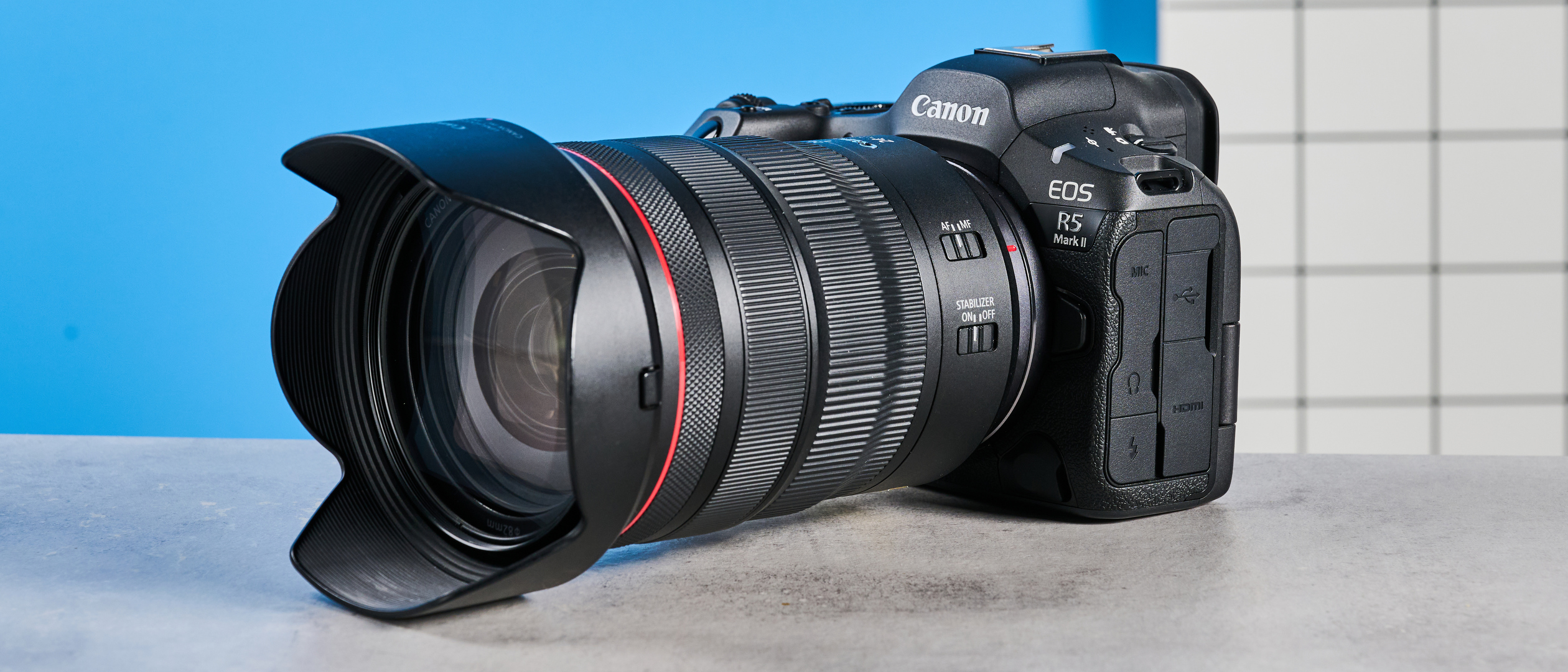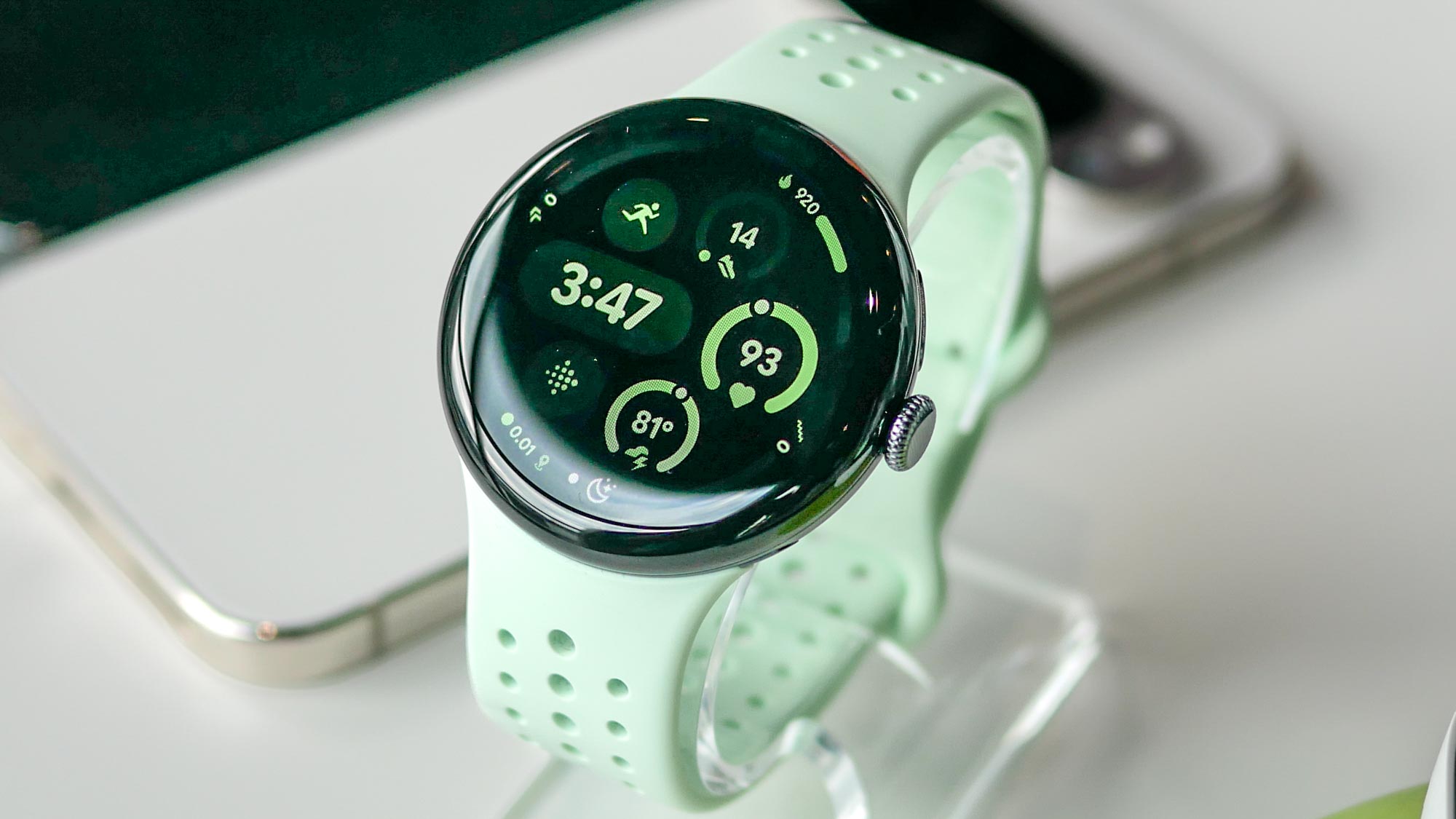Tom's Guide Verdict
The Canon EOS R5 Mark II improves on its predecessor by introducing a 45MP Stacked sensor that captures lots of detail for extreme cropping. Its intelligent autofocus system with Auto subject-detection quickly locks on to animal and human faces and eyes, as well as vehicles. It’s built well and handles sublimely, and its 30fps burst shooting and 8.5-stops of IBIS make capturing action effortless.
Pros
- +
Fantastic handling and build
- +
45MP Stacked sensor
- +
Rapid AF and subject tracking
- +
CFExpress Type B support
- +
In-camera 180MP upscaling
Cons
- -
Finicky Eye Control AF
- -
Short battery life
Why you can trust Tom's Guide
The Canon EOS R5 Mark II succeeds the powerful EOS R5 and brings outstanding features for all types of photographers and content creators. Featuring a 45MP Stacked CMOS sensor, the camera takes stunning photos with plenty of detail for extreme cropping.
Its rapid AF, 30fps burst shooting, up to 8.5-stops of IBIS and CFExpress Type B support make it ideal for wildlife and sports photography. It’s a hybrid powerhouse too, capable of recording 8K/60fps video with 10-bit 4:2:2 color depth. The EOS R5 Mark II’s handling is fantastic, and it’s an easy camera to get accustomed with straight out of the box thanks to its intuitive menu and controls.
This is one of the best mirrorless cameras thanks to these and many other reasons. Read my full Canon EOS R5 Mark II review for all the details.
Canon EOS R5 Mark II review: Cheat sheet
- What is it? Canon’s flagship full-frame hybrid camera that succeeds the EOS R5
- Who is it for? For professional wildlife and sports content creators
- How much does it cost? The Canon EOS R5 Mark II retails for $4,299 / £3,799
- What do we like? The autofocus system is quick and reliable, image quality is stunning with plenty of detail for cropping, there’s support for CFExpress Type-B cards, and the camera handles fantastically
- What don’t we like? Eye Control AF is finicky and battery life is underwhelming
Canon EOS R5 Mark II review: Specs
Specs | Canon EOS R5 Mark II |
|---|---|
Price | |
Sensor | 45MP Stacked CMOS |
Processor | DIGIC Accelerator and DIGIC X |
Stabilization | Up to 8.5-stop IBIS |
AF system | Dual Pixel Intelligent AF |
Focus modes | One Shot, Servo AF, AI Focus AF |
Viewfinder | OLED EVF, approx. 5.76 million dots |
Display | 3.2-inch Color TFT touchscreen, approx. 2.1 million dots |
ISO range | 100-51,200 (expandable to 102,400) |
Max video resolution | 8K/60fps | 4K/120fps |
Ports | USB-C, HDMI Type-A, 3.5mm external mic and headphones, N3-type terminal, PC flash sync socket, ethernet, 1x CFExpress Type-B, 1x SD/SDHC/SDXC UHS-II |
Wireless/Bluetooth | Wi-Fi, Bluetooth |
Max shooting speed | 30fps electronic | 12fps mechanical |
Max shutter speed | 30s to 1/32000s (stills, electronic) | 30s to 1/8000s (stills, mechanical) | 1s to 1/8000s (movies) |
Battery life (Stills, CIPA) | 340 shots (viewfinder); 630 shots (LCD monitor) |
Size | 5.45 x 3.98 x 3.68 inches |
Weight | 1.44lbs (body only) |
Canon EOS R5 Mark II review: Price & availability
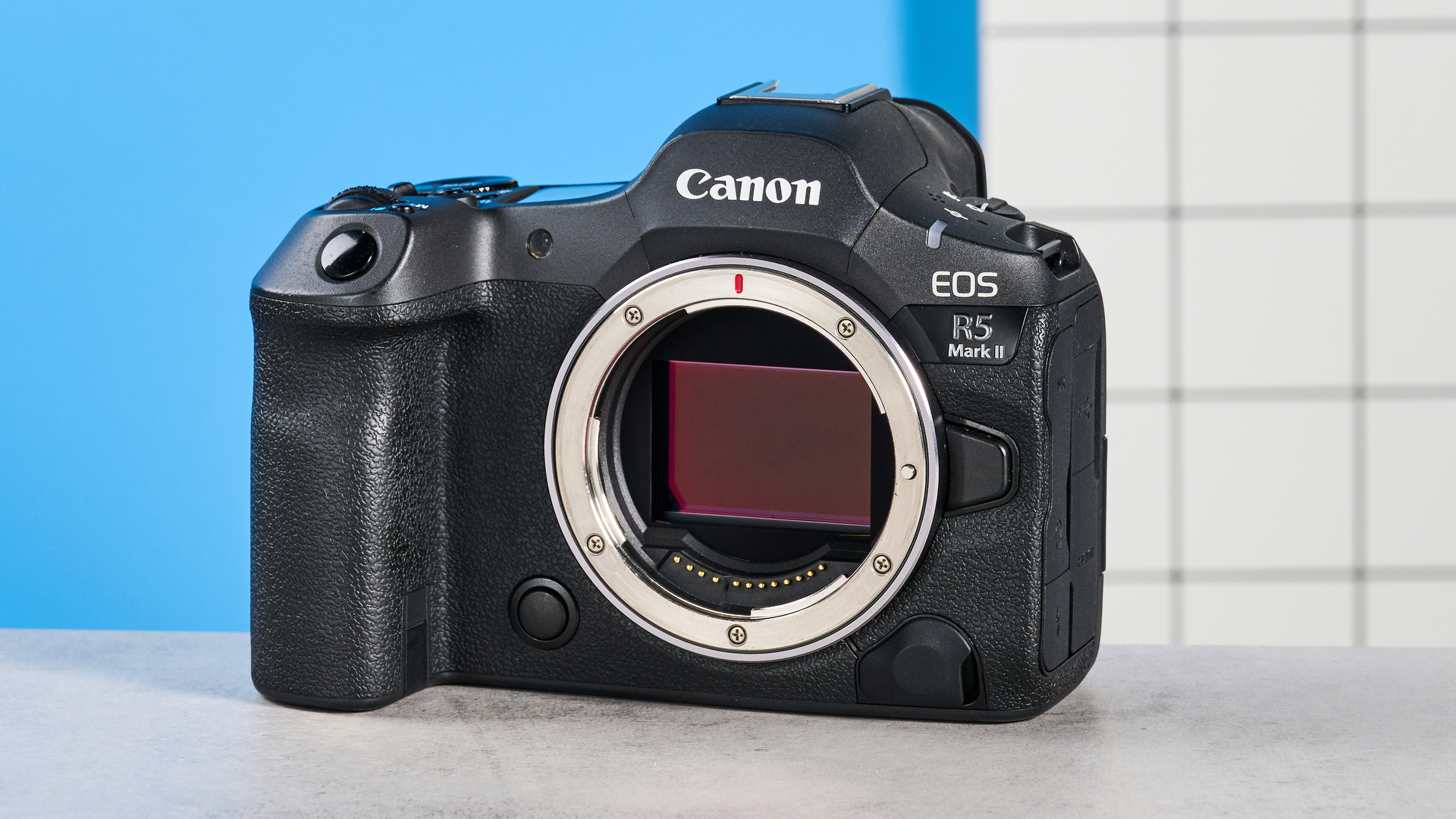
The Canon EOS R5 Mark II succeeds the first-gen EOS R5 and has a retail price of $4,299 / £3,799 for the body only. I tested it with the Canon RF 24-70mm F2.8L IS USM which is available for $2,399 / £2,629.
Given its pro-level features and premium price tag, the EOS R5 Mark II finds itself competing against other professional full frame cameras, such as the Sony A1 II ($6,499), the Canon EOS R1 ($6,299), the Nikon Z9 ($5,499), the Canon EOS R3 ($4,999) and the Sony A7RV ($3,898).
Canon EOS R5 Mark II review: Design
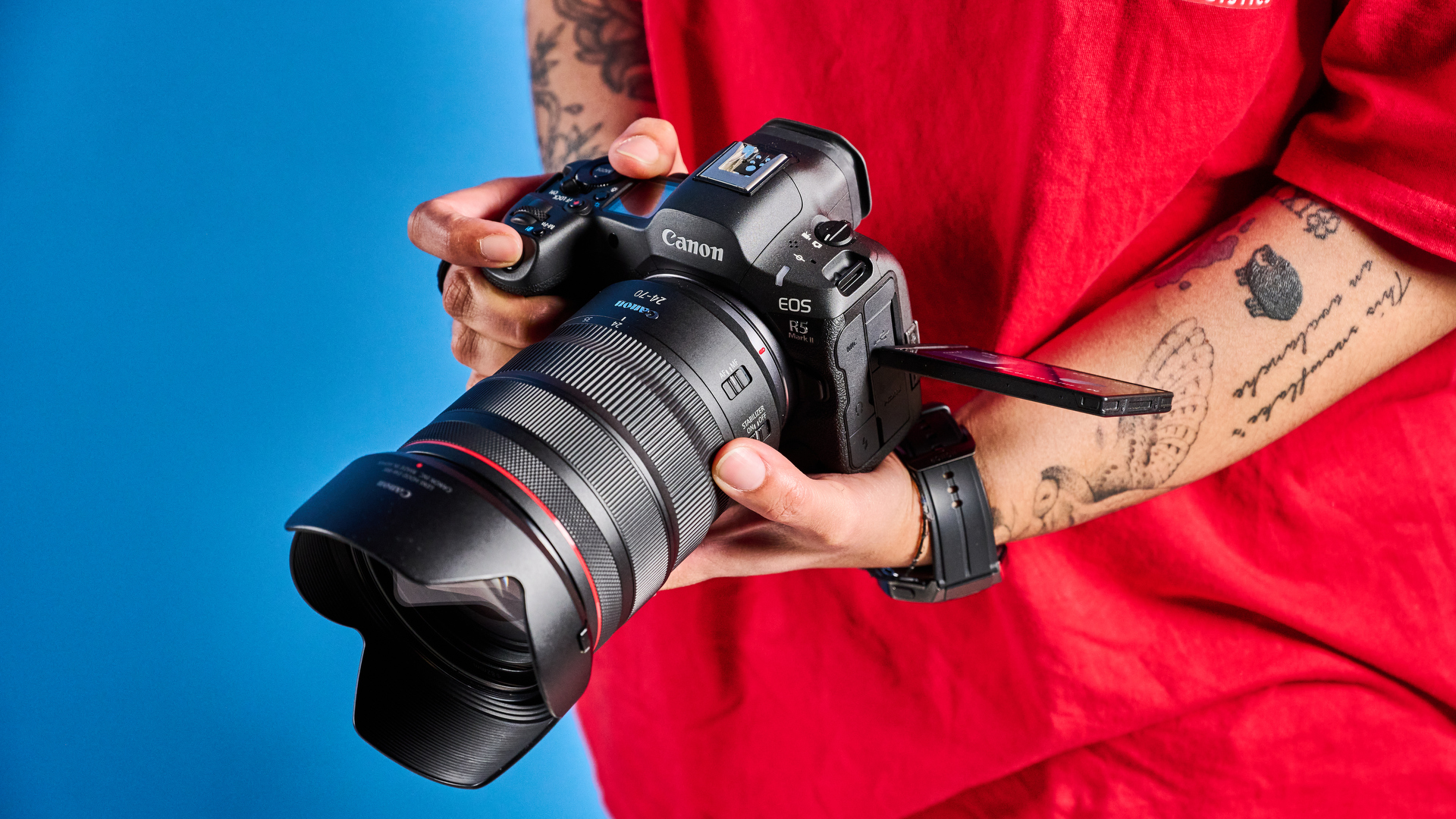
The Canon EOS R5 Mark II and its predecessor are near-identical. Place the two side-by-side and you’d find it hard to tell the difference. The EOS R5 Mark II is slightly bigger, measuring 5.45 x 3.98 x 3.68 inches, and a little heavier too, weighing 1.44lbs (without battery and memory cards).
The sculpted grip is deep and extremely comfortable to wrap your hand and fingers around. It also makes it easy to hold the EOS R5 Mark II with just one hand.
Ports
On the EOS R5 Mark II’s bottom plate, you’ll find a battery compartment which houses the LP-E6P battery pack, and next to it is the ethernet socket. Also located on the bottom plate is the tripod thread.
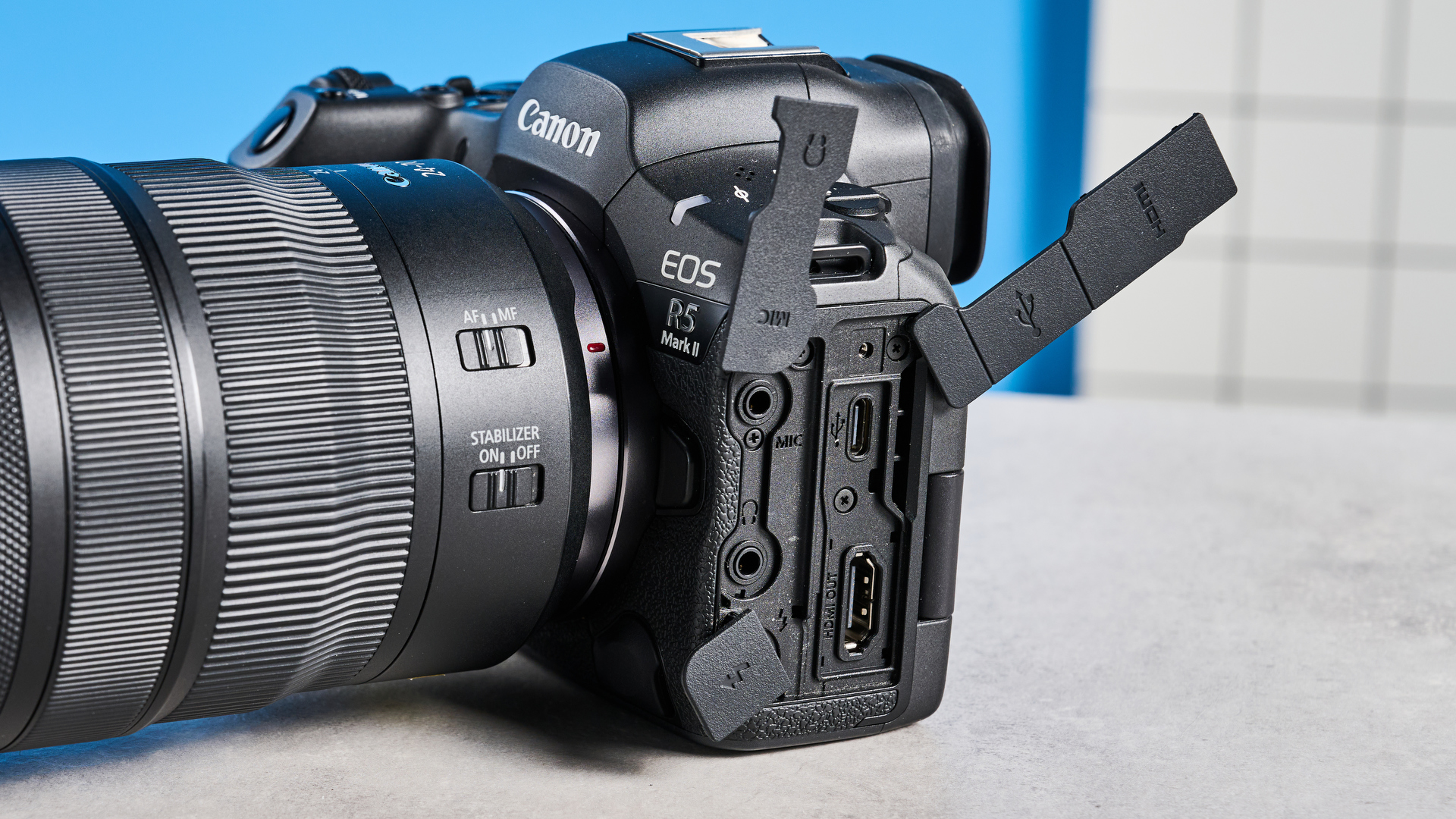
All other ports are located on the camera’s left edge. These include: 3.5mm headphones and mic jacks, USB-C, HDMI Type-A, PC flash sync socket, and an exhaust vent. These are protected by rubber flaps that stay securely locked in place.
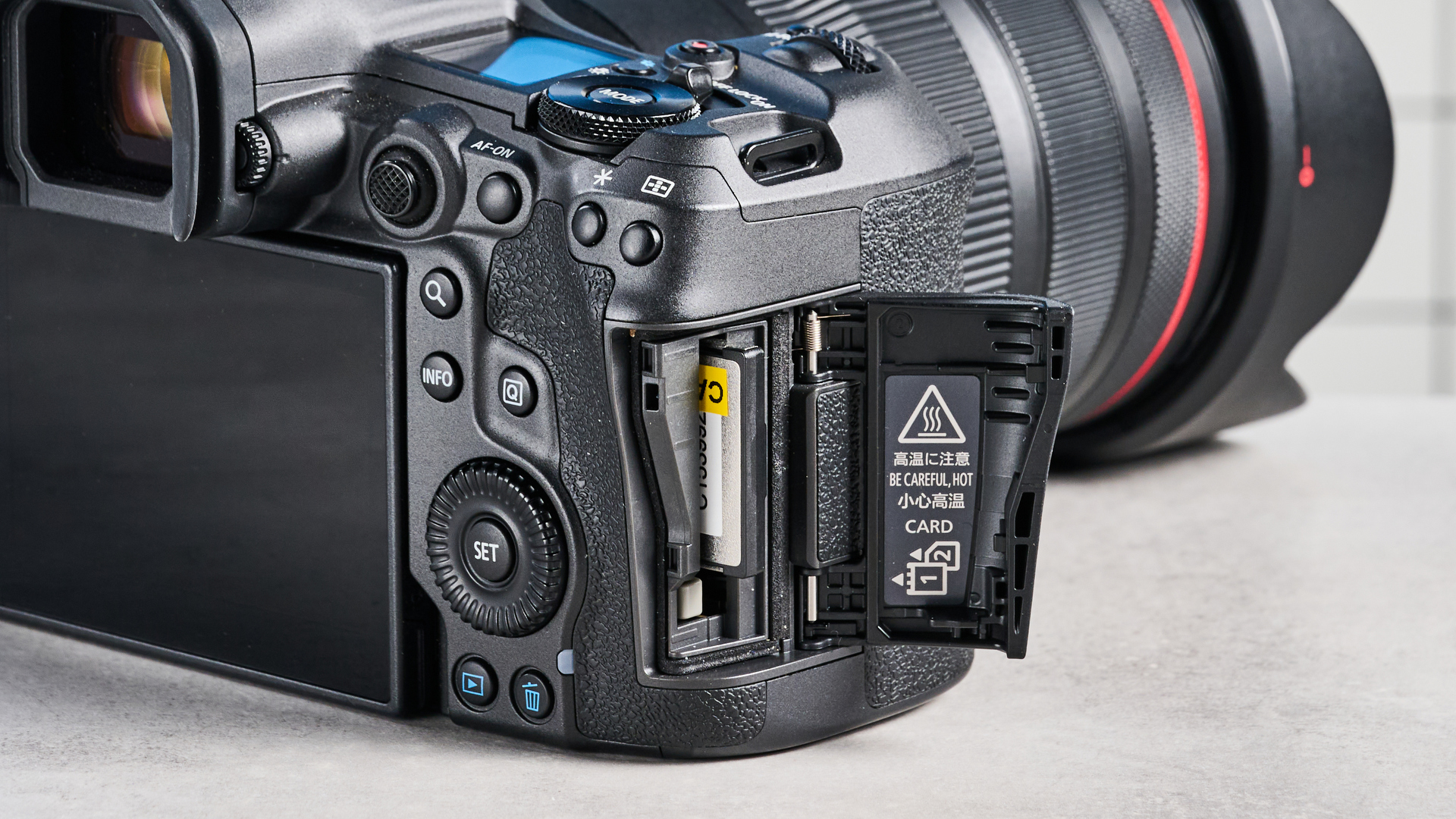
On the right edge, you’ll find two card slots: one for a CFExpress Type-B card and another for UHS-II SD cards. The Sony A1 II supports two CFExpress Type-A cards, which are smaller. You can use a Type-A card with the EOS R5 Mark II as long as you have an adapter. CFExpress compatibility is extremely useful in a professional camera with this megapixel count, thanks to the faster write speeds versus SD.
Monitor
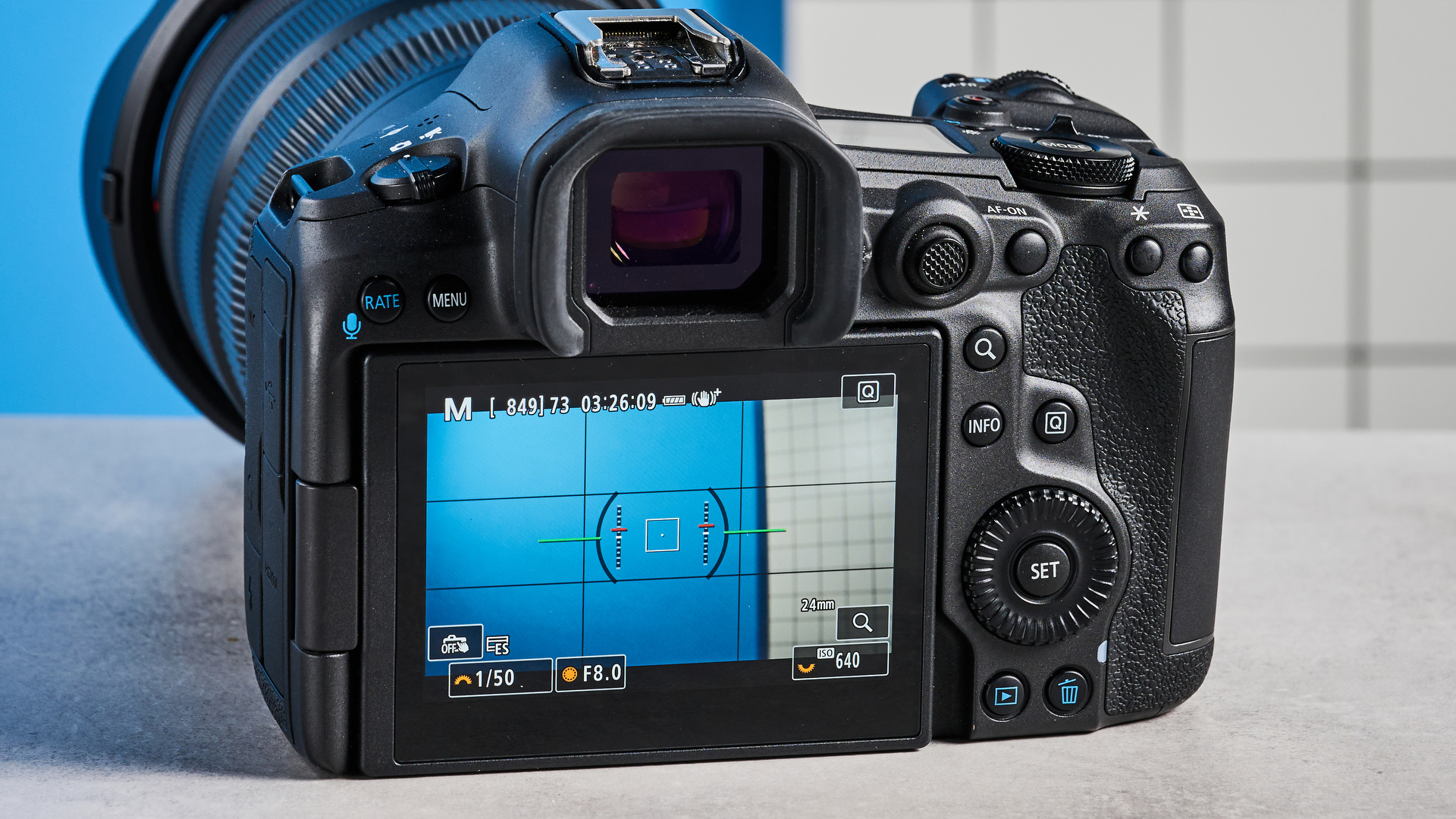
The EOS R5 Mark II’s back panel houses the 3.2-inch Color TFT touchscreen which has a resolution of approximately 2.1 million dots. This resolution is higher than that of the Sony A1 II (2.09M dots) and the Nikon Z9 (2.08M dots) but much lower than the Canon EOS R3 (4.15M dots). The Canon EOS R1’s display, though, has the same resolution.
I found the touchscreen highly responsive and bright enough so it was easy to read and see in most lighting conditions. Its three-way tilt mechanism is also handy for shooting at awkward angles, such as photographing swans close to the ground or birds flying directly overhead.
Viewfinder
The viewfinder has been significantly improved over the first-gen model. The EOS R5 Mark II has a 5.76-million-dot OLED viewfinder with a refresh rate of 120Hz. It’s large at 0.5 inches with a 0.7x magnification, and very detailed. In comparison, the EOS R5 utilizes 3.69M dots with a 0.8x magnification.
It’s important to note, though, that the Sony A1 II and the Canon EOS R1 have more detailed viewfinders. Both cameras boast 9.44M dots, and the A1 II has a 240Hz refresh rate, but both are also more expensive than the EOS R5 Mark II.
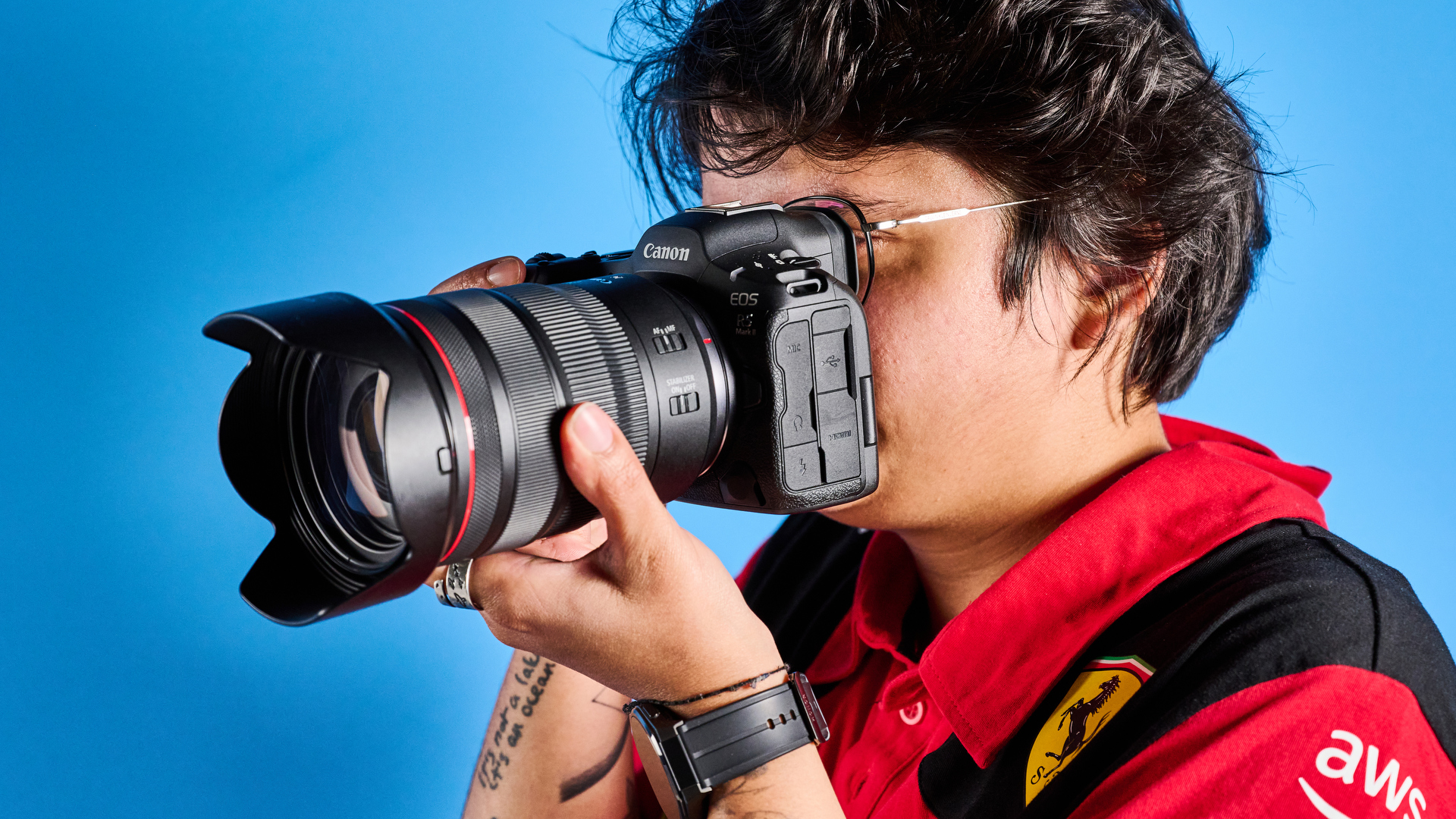
The EOS R5 Mark II inherits Canon’s Eye Control AF which, basically, tracks your eye movements as you scan the scene. It then shifts the focus point accordingly, making switching between subjects or tracking a bird in flight hassle-free.
When you’re shooting in burst, the camera will continue to track the subject without the viewfinder going blank between shots — and it works just as intended.
On paper, this sounds like a game-changer but in my testing, it proved finicky and didn’t always work. I calibrated it a few times in different lighting conditions, as per Canon’s instructions, but I just couldn’t get the focus point to stay centred. I calibrated the first profile while wearing my prescription glasses, and then tried doing it without glasses. Neither worked well so I disabled the feature.
Canon also says that unlike its predecessor, the EOS R5 Mark II is blackout-free. This means that when you’re shooting in burst, the camera will continue to track the subject without the viewfinder going blank between shots — and it works just as intended.
Weather-sealing
The EOS R5 Mark II, just like its predecessor, is weather-sealed against rain and dust — so the camera can go anywhere you want to. I was treated to a short, sudden downpour while out shooting, and the camera and lens were unscathed.
Canon EOS R5 Mark II review: Controls
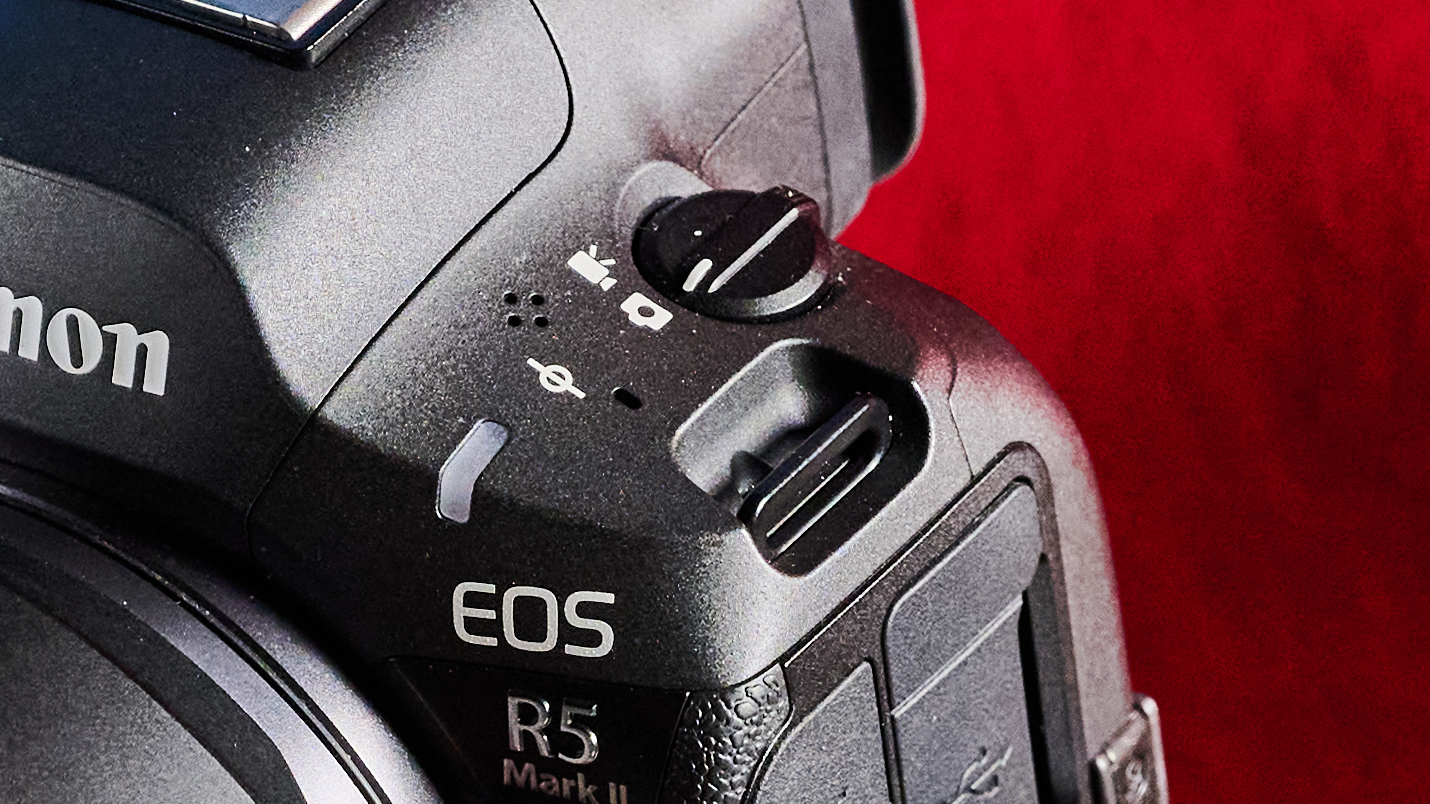
For a professional camera, the Canon EOS R5 Mark II is straightforward to use right out the box. Its controls are easy to get accustomed to and are very intuitive.
On the Mark II, Canon has made two significant improvements to the positioning of the power button and stills/video switch. The power button has moved to the right-hand side and sits around the Mode button. This makes turning the camera on/off with one hand much easier. The old power switch is now a wheel that lets you swap between stills and video.
Nearly every button and dial on the EOS R5 Mark II is remappable. For instance, I remapped the Multi-Function button to Drive Mode so I could quickly swap to burst shooting, and the AF-On button to Eye Detection AF. Even in stressful scenarios, the controls felt within easy reach and they became second nature to me, especially after customizing them.
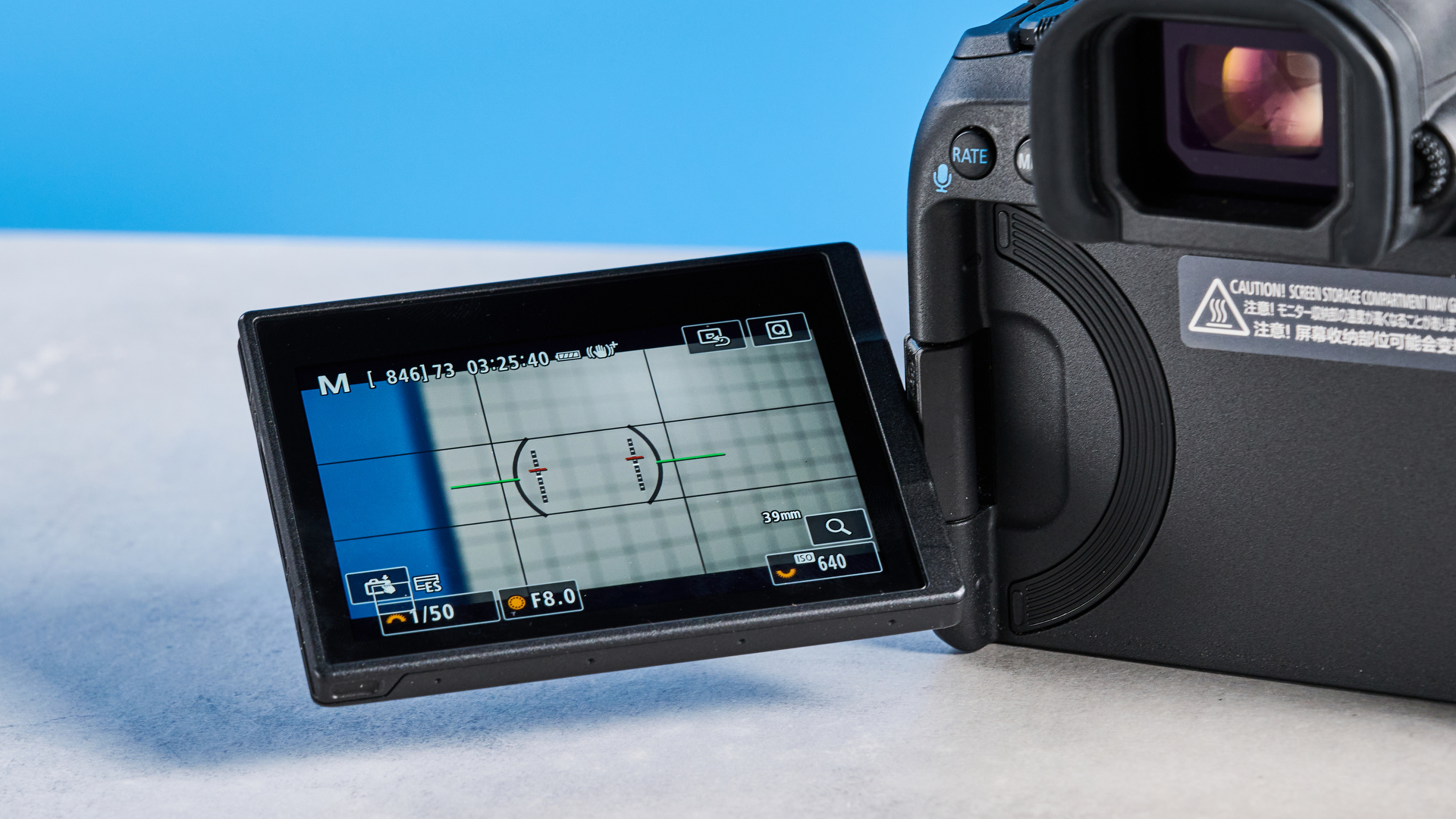
Canon’s menu system is a cut above the rest as it’s easy to read and straightforward to navigate. The different colors help distinguish between settings too, which is a very handy feature for finding your way back to a setting.
Reviews editor, Pete Wolinski, used the camera for product photography, and was equally impressed: "I tested the EOS R5 Mark II in our photo studio for some product photography, and was very impressed with how well it handled for such a big, complex camera, and how easy it was to set up to my liking in the first place. It was a joy to use in a studio environment.
"Setting the camera up entirely for my own preferences took me just a couple of minutes, which is crazy given it was already set up for Nikita and that I'm not that familiar with Canon menus. I was shooting in no time.
“Everything I needed was within easy reach of my fingers at all times and buttons and dials felt intuitively placed, so while I was crouching down for some odd-angled close ups, I could change what I needed by feel."
Canon EOS R5 Mark II review: Autofocus performance
The Canon EOS R5 Mark II uses the brand’s Dual Pixel Intelligent AF system to great effect, with accurate and reliable subject detection. Almost the entire sensor can be used for phase-detection autofocus. The camera utilizes 1,054 AF points to detect animals, birds, humans and vehicles. In comparison, the Sony A1 II uses just 759 points and the Nikon Z9 uses 493 points.

Before I even started testing the EOS R5 Mark II, I had high expectations for its autofocus system — and it did not let me down. Whether I was photographing animals or humans, it quickly recognized the subjects and had no issues shifting focus to other subjects as scenes changed.
In the photo above, the EOS R5 Mark II automatically locked on to the front meerkat, but I wanted the one behind to be the subject. I used the joystick to shift between meerkats and the camera quickly locked onto the rear animal, rendering the other out of focus. The photo is extremely sharp too, with the meerkat’s fine whiskers easily distinguishable.
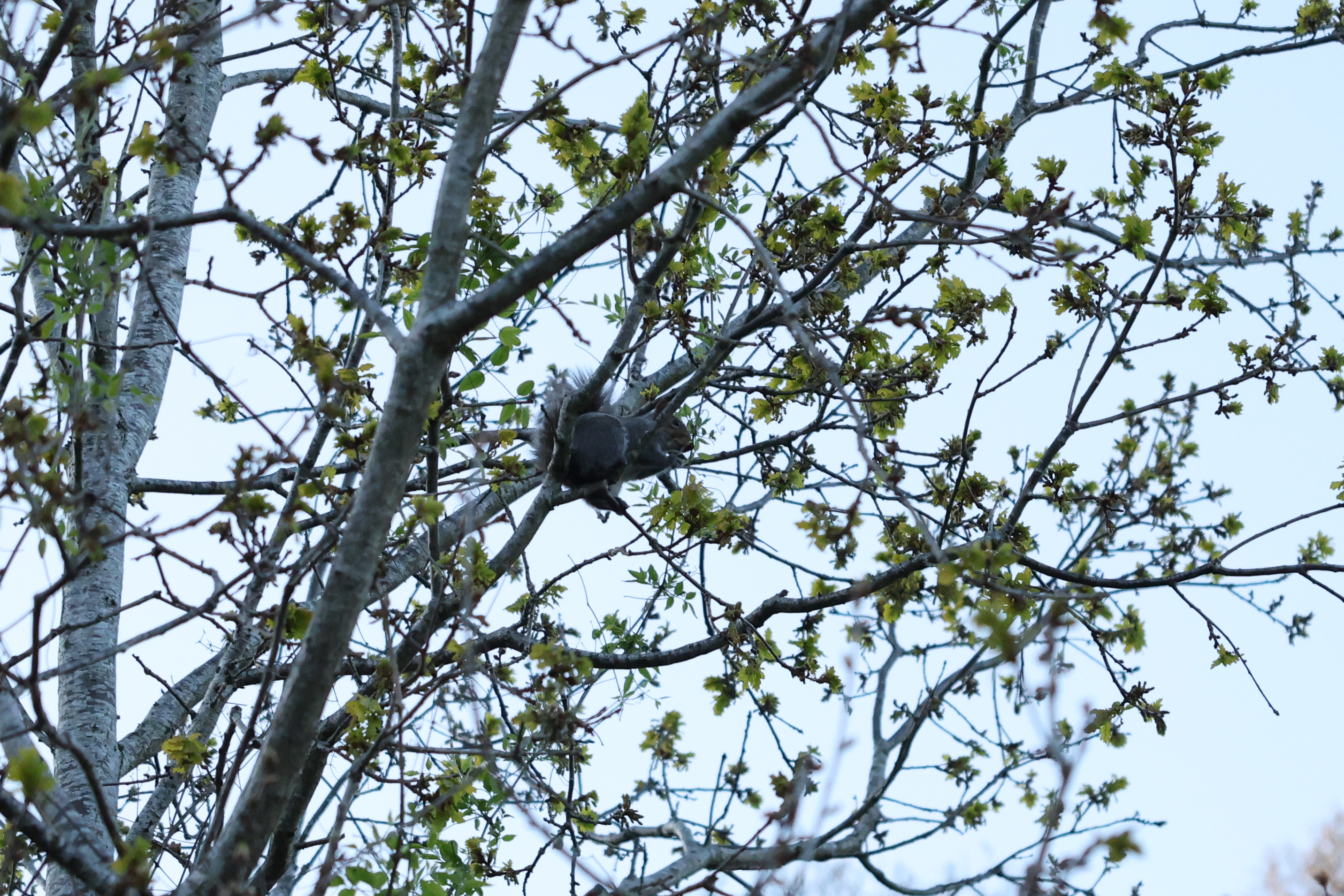
The EOS R5 Mark II is also quick to lock on to subjects slightly obscured. In the photo above, I heard the squirrel but couldn’t spot it immediately. I pointed the camera in its direction and it quickly focused on it, enabling me to pinpoint its location. In that moment, the camera became my eyes, and it left me impressed with its ability to detect subjects better than I myself could.
It’ll do what it says on the tin: automatically detect subjects which removes the need to switch between AF detection modes.
Similar to the Sony A1 II, the EOS R5 Mark II features Auto subject-detection but you need to manually select this via touchscreen controls. Once enabled, it’ll do what it says on the tin: automatically detect subjects which removes the need to switch between AF detection modes and potentially miss shots.
I found this extremely handy when shooting outdoors. I tested this by switching from photographing birds to my partner at a local park. The camera took milliseconds to register I’d switched subjects and it automatically focused on my partner and vice versa.

Eye Detection AF works well on humans too, even when they’re wearing sunglasses or their eyes are obscured in a way. In the photo above, the camera was quick to lock onto my mother’s face and eyes, resulting in a detailed photo.
The EOS R5 Mark II introduces two new modes: People Priority and Action Priority. People Priority is a fantastic face detection mode. Via the camera’s menu, you can ‘register’ up to 10 faces. All you need to do is take a portrait/headshot of the person and the camera will then prioritize them on a scale of 1 (most important) to 10 (least important).
Once you’ve done this, the EOS R5 Mark II will automatically focus on these faces in group photos — perfect for wedding and sports photography.
Canon EOS R5 Mark II review: Stabilization
Depending on the lens you use with it, the Canon EOS R5 Mark II is capable of delivering up to 8.5-stops of in-body image stabilization (IBIS). This means that you can shoot at slow shutter speeds handheld and IBIS comes in handy when shooting in low-light conditions.
Image stabilization
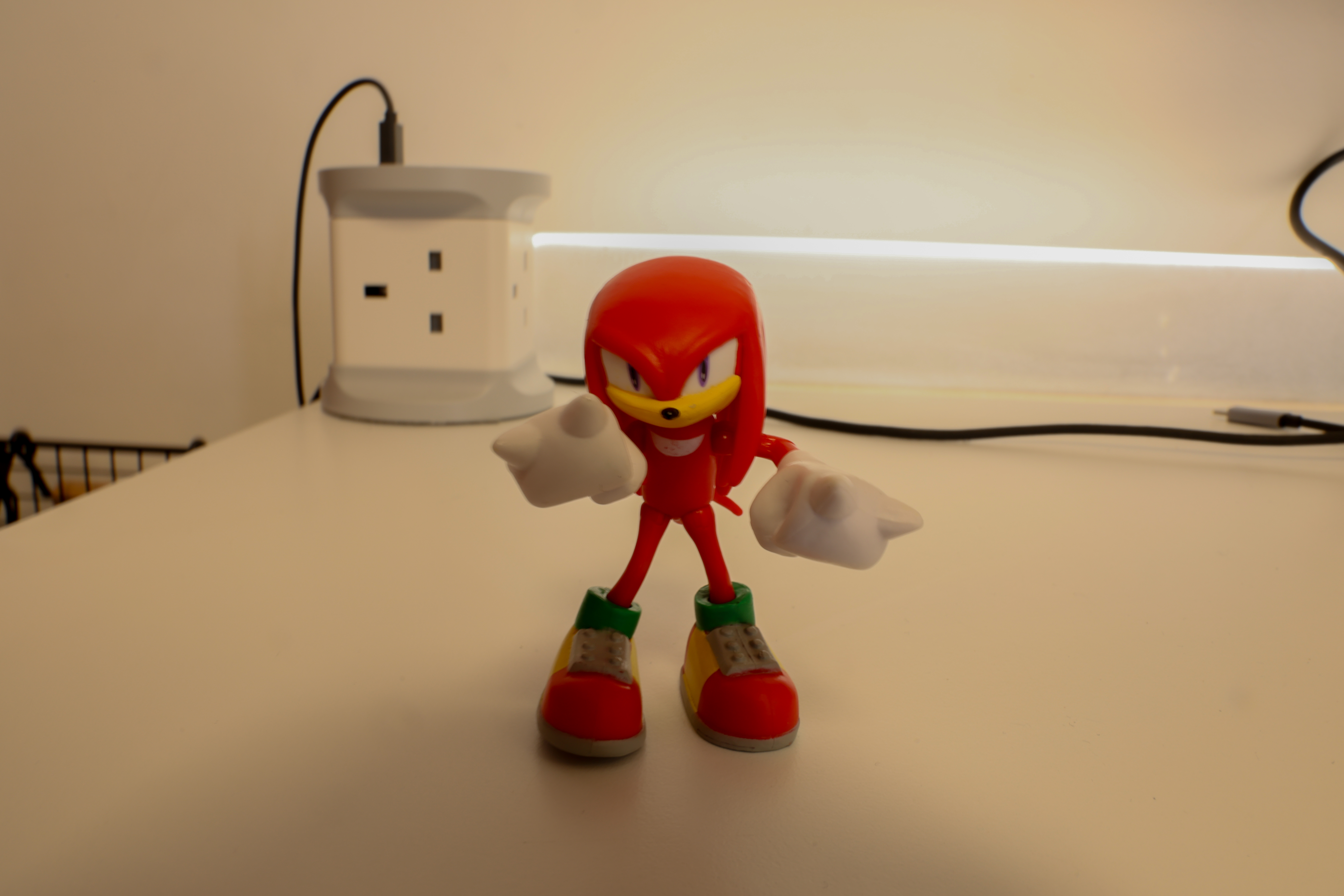
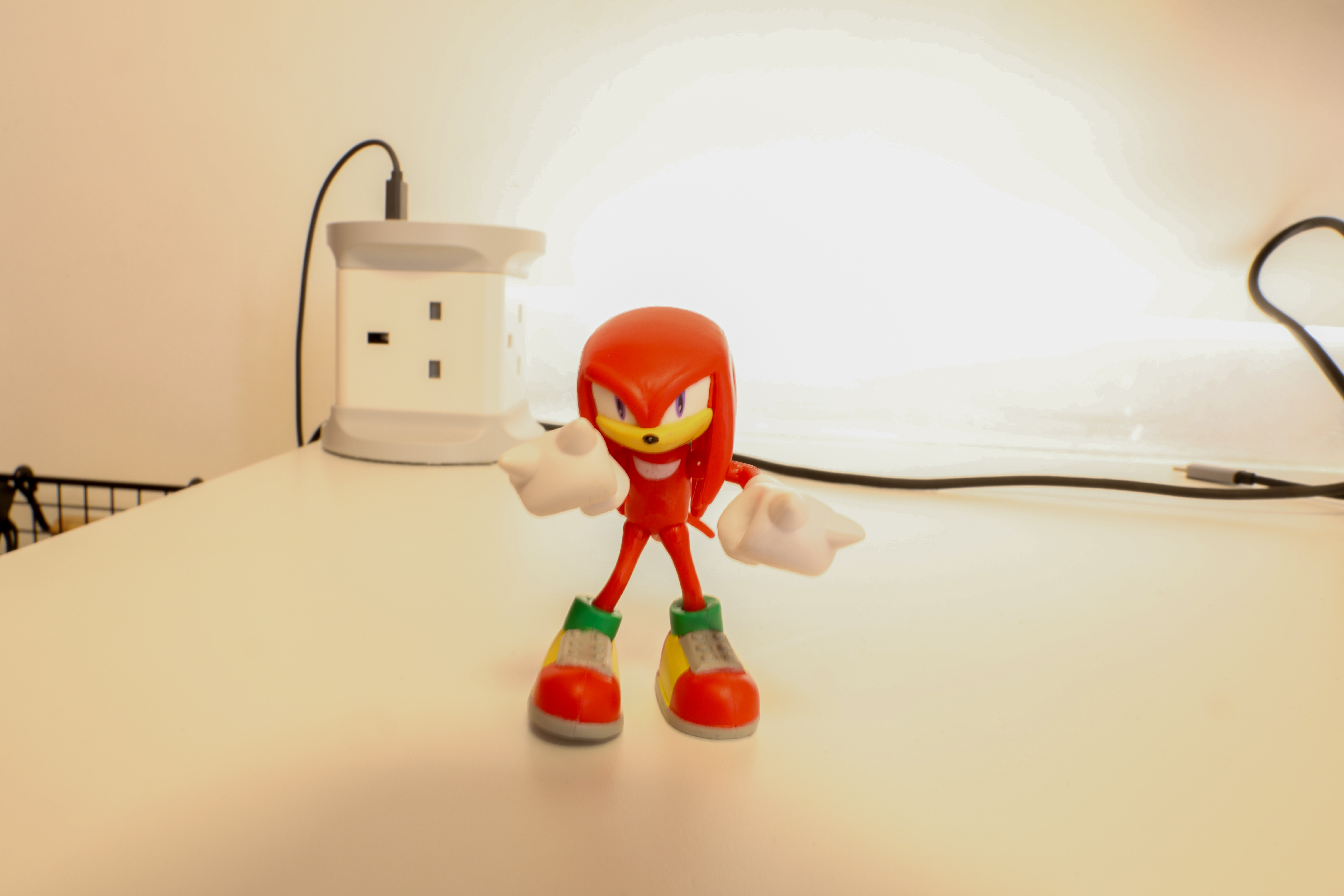
The first photo in the gallery above was shot at 2s and it’s very sharp. I then slowed the shutter speed down to 4s and the photo is (very) slightly blurry from camera shake, as you can see in the second slide. The lens I was using, the RF 24-70mm F2.8L IS USM, has built-in optical stabilization (5-stops), and the photos above were taken with it enabled.
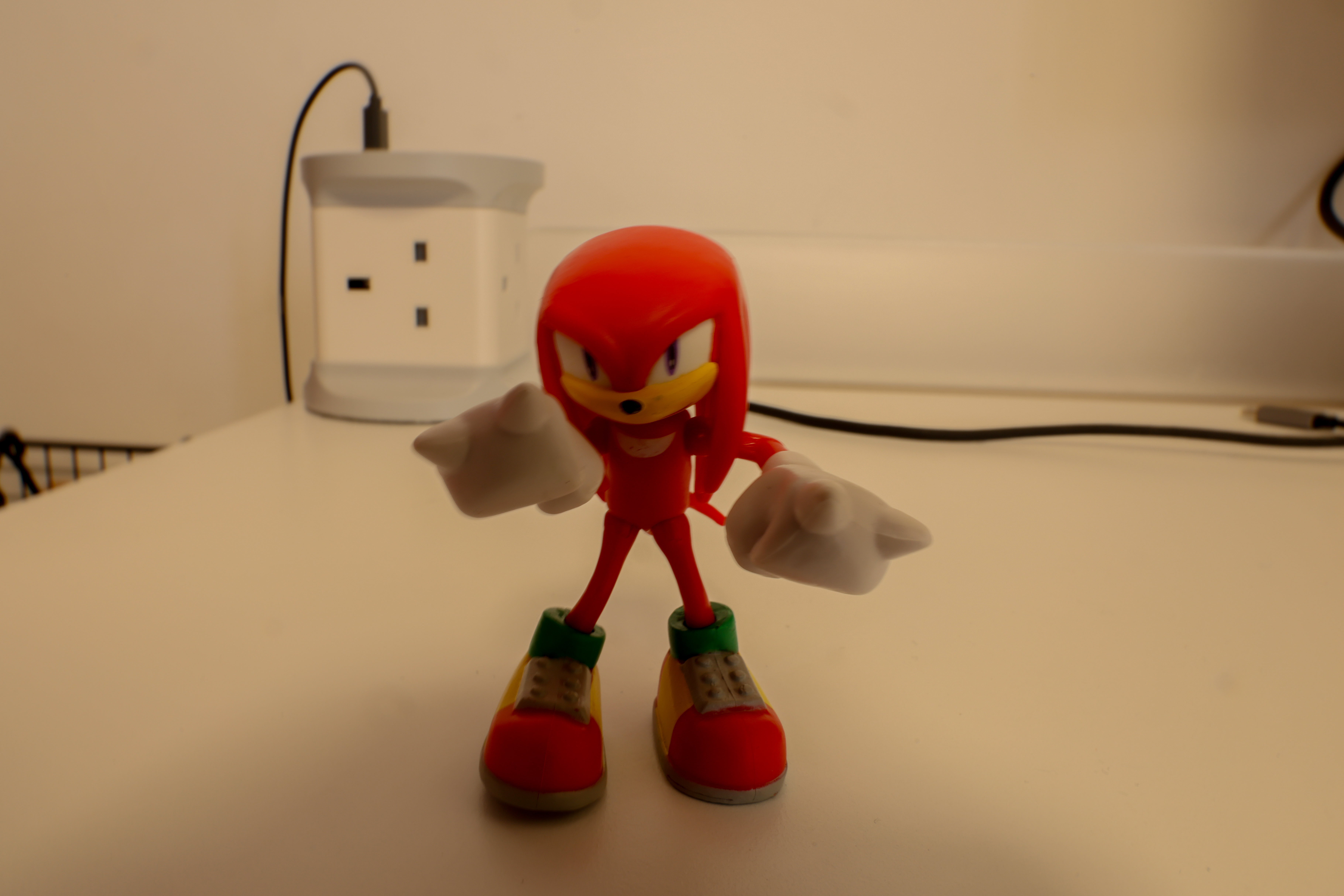
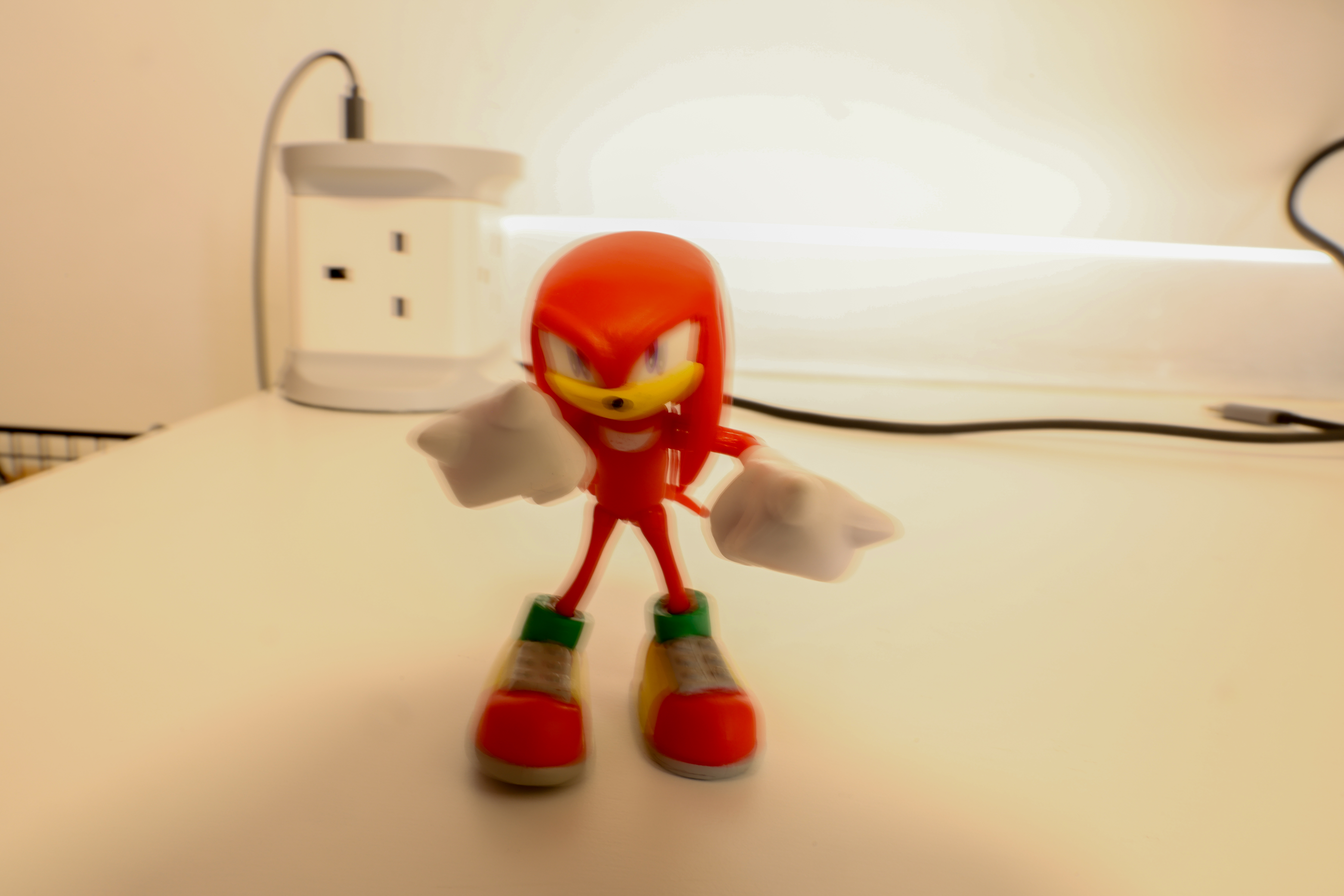
I then disabled the stabilization on the lens (via the switch located near the zoom ring) and took a photo at 2s (first shot above) and then at 4s (second shot above). The first photo is sharp and usable but the second has been ruined by camera shake.
The results in the first gallery are great, so you can shoot at shutter speeds as slow as 4s as long as you have an IS-enabled lens on hand — and at 2s without an IS-enabled lens.
Video stabilization
For video, the EOS R5 Mark II has two modes: Movie IS On and Movie IS Enhanced. You can see samples of both in the video above. IS On incurs a 1.1x crop while Enhanced incurs a 1.6x crop, but both work extremely well.
Canon EOS R5 Mark II review: Image quality
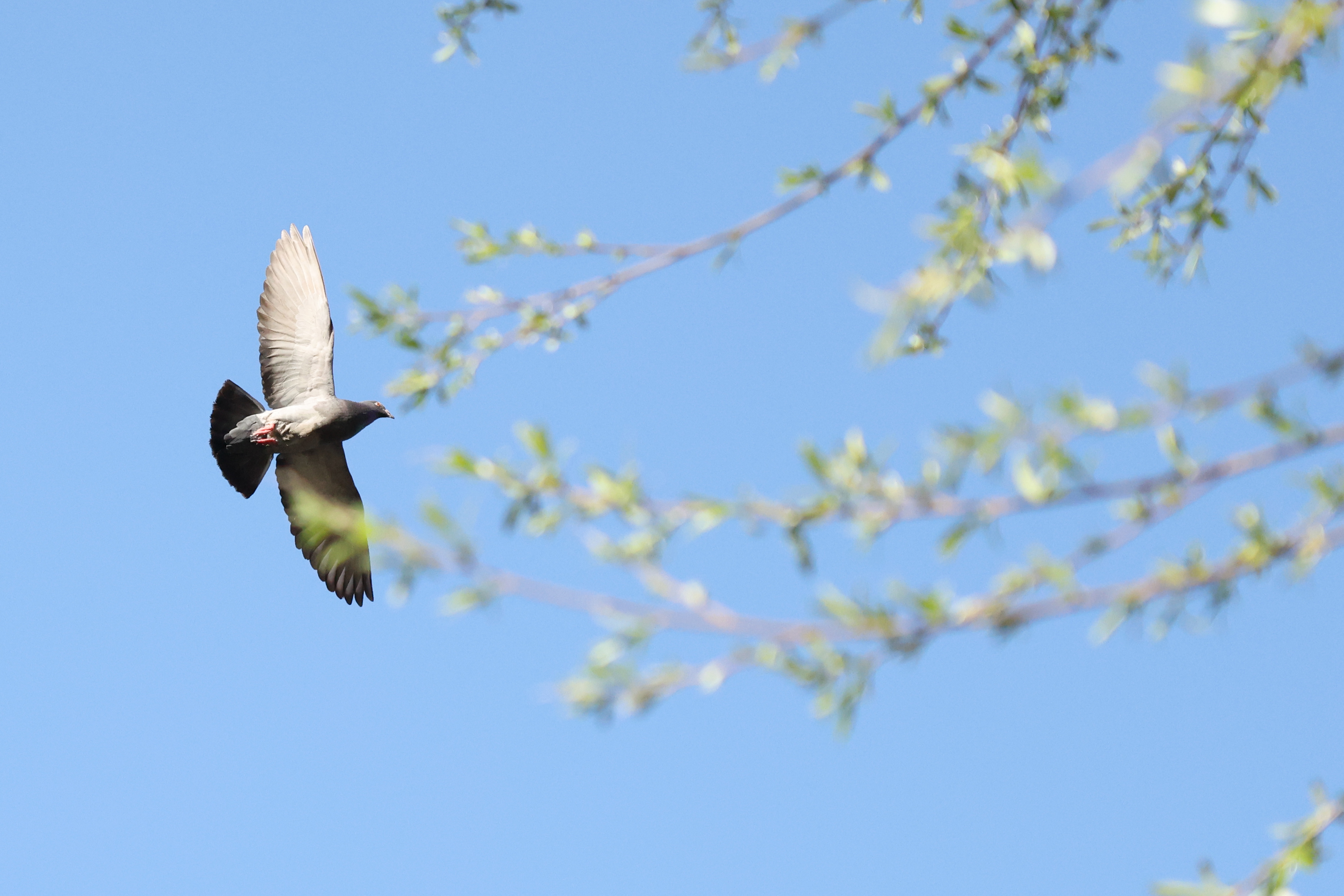

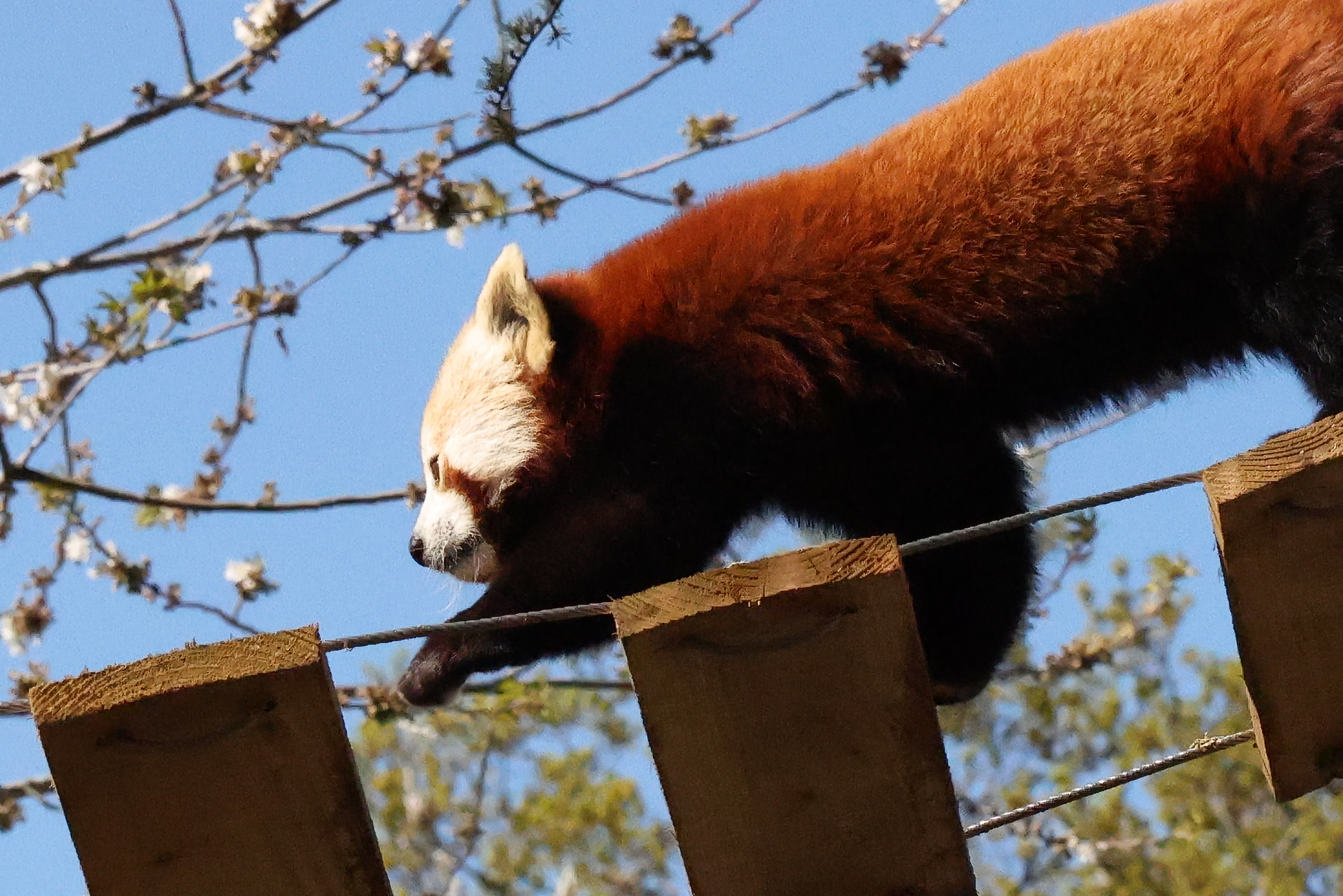
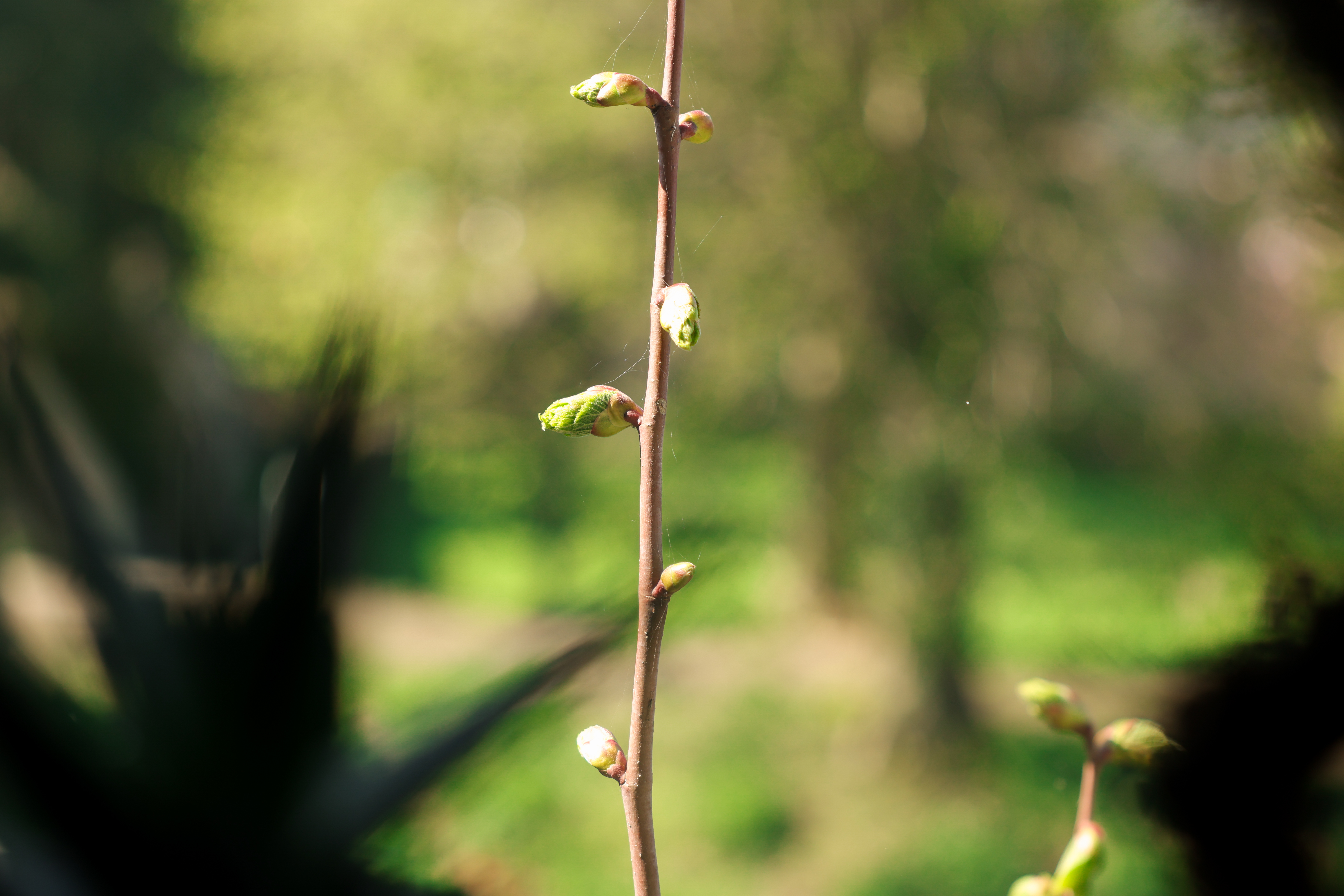
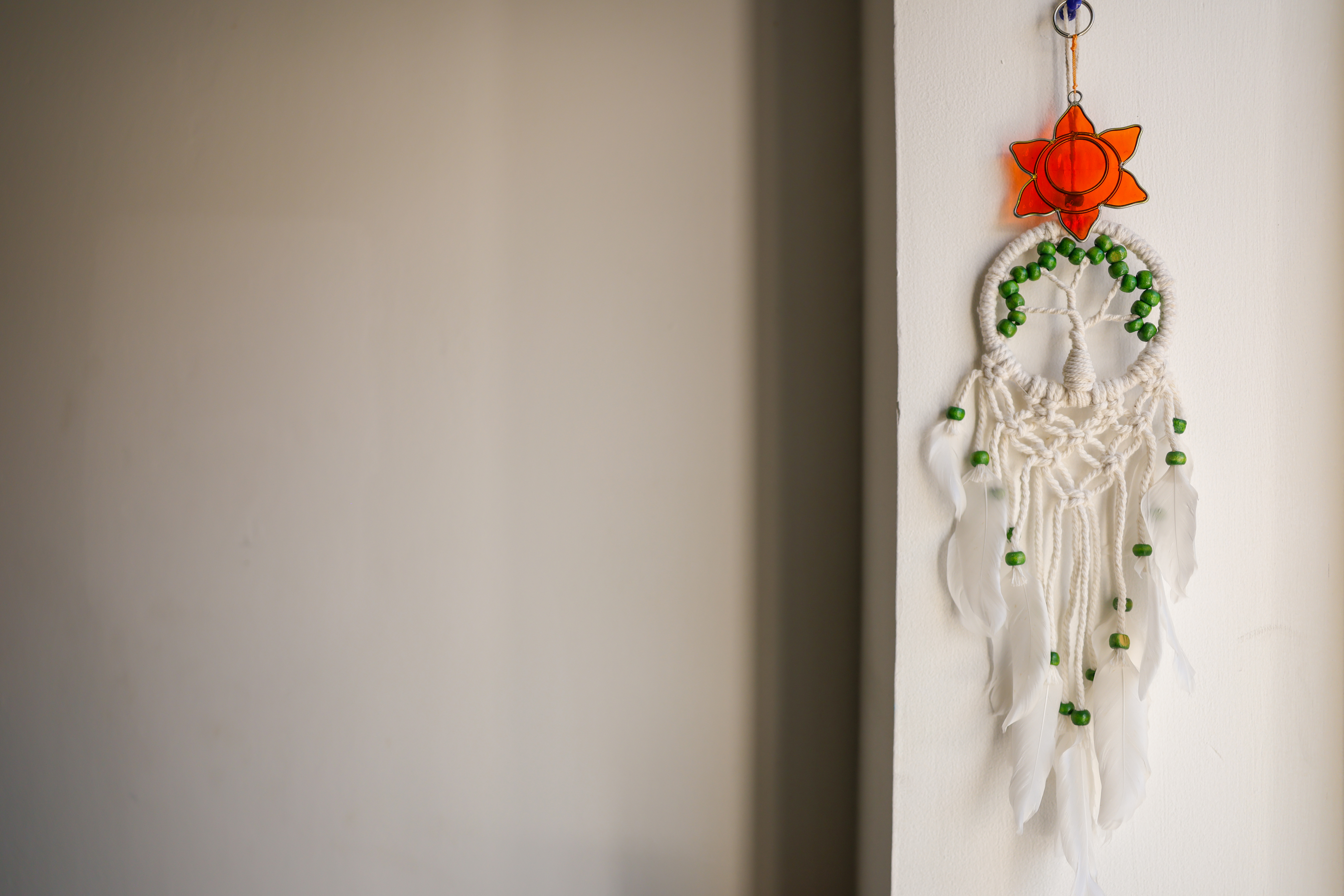
The Canon EOS R5 Mark II is an imaging powerhouse, producing detailed, sharp images with faithful color reproduction, the latter of which you can see in the gallery above, where the reds and oranges especially are popping. The camera is equipped with a 45MP Stacked CMOS sensor, whose stacked nature enables speedier readouts to minimize rolling shutter distortions.
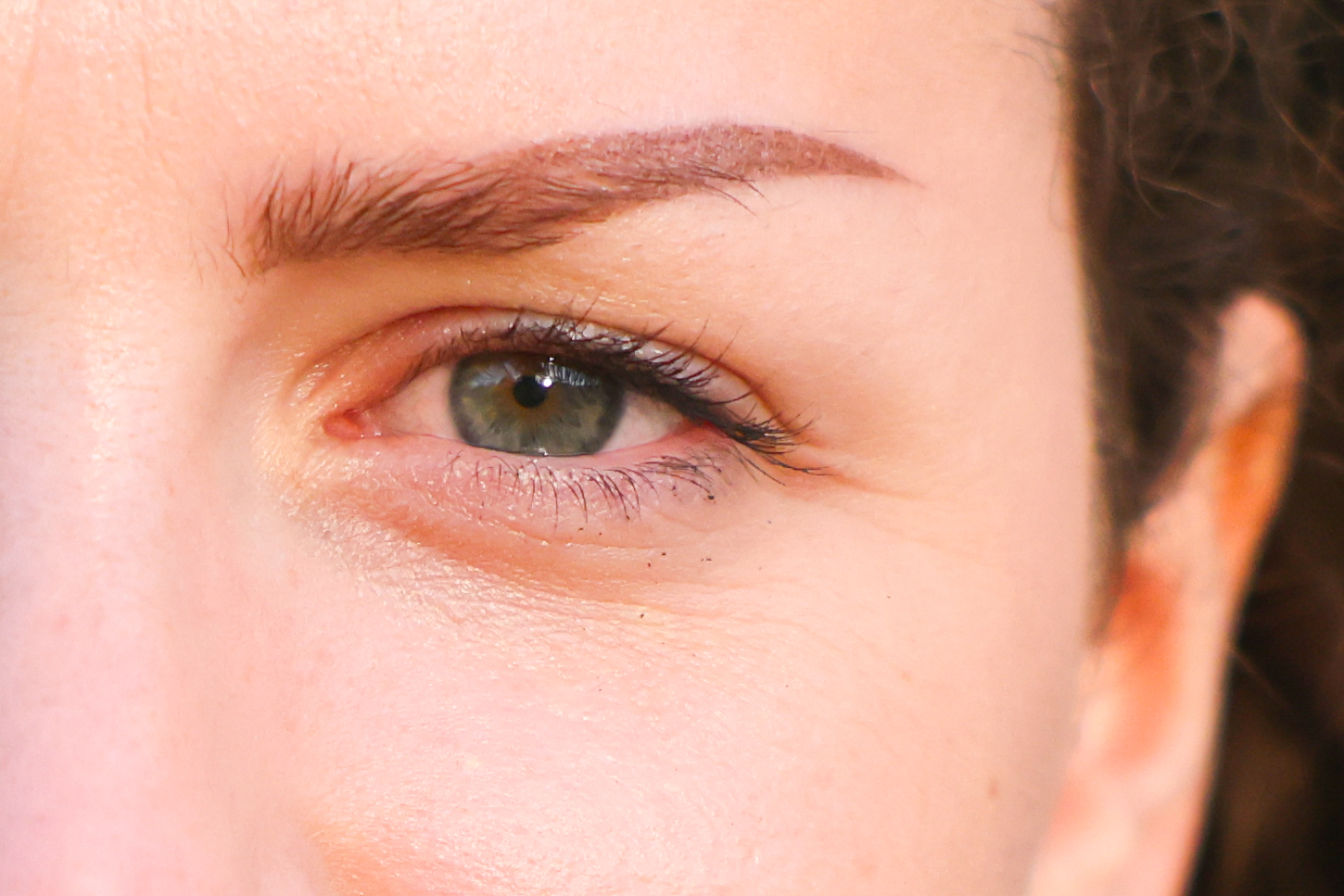

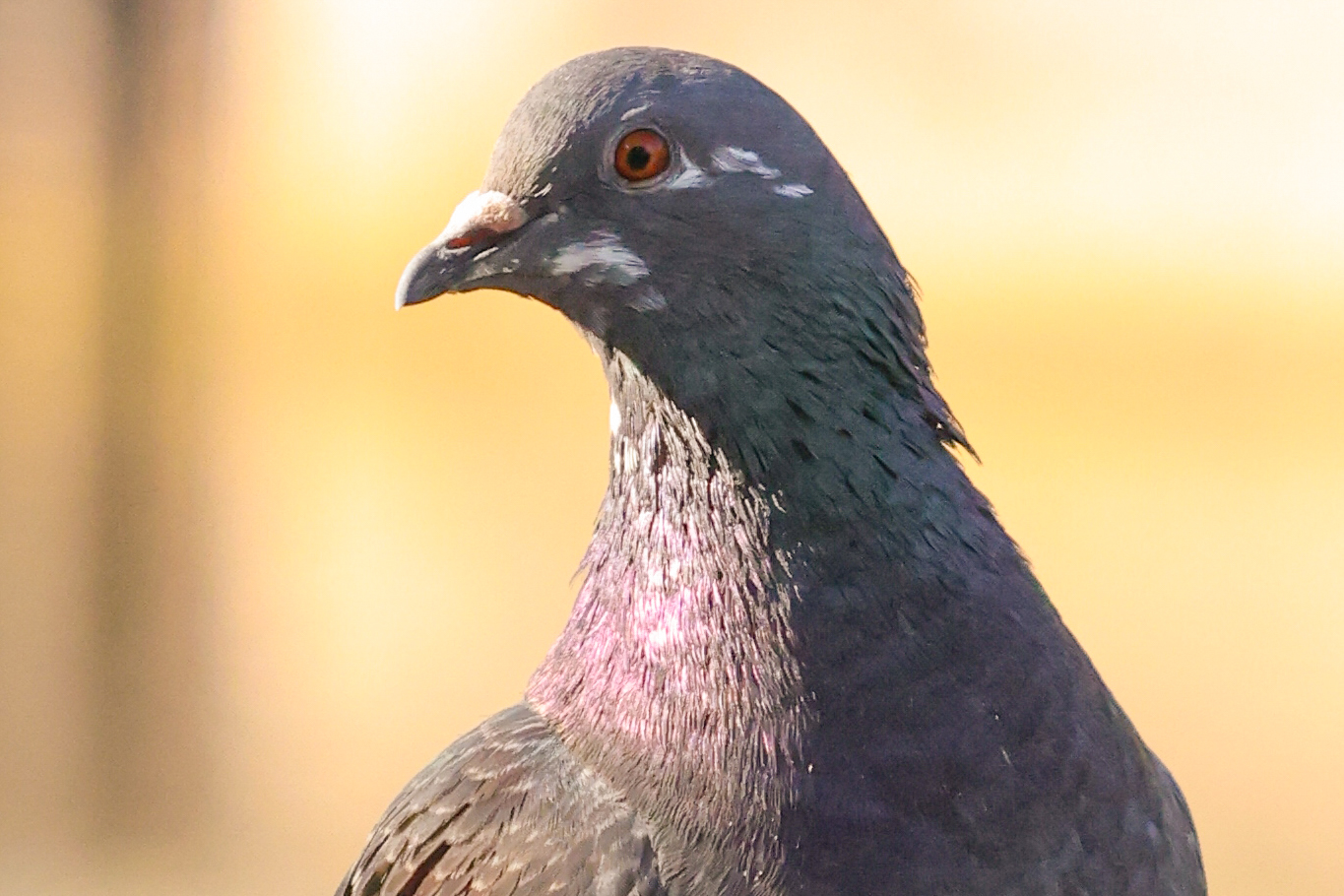
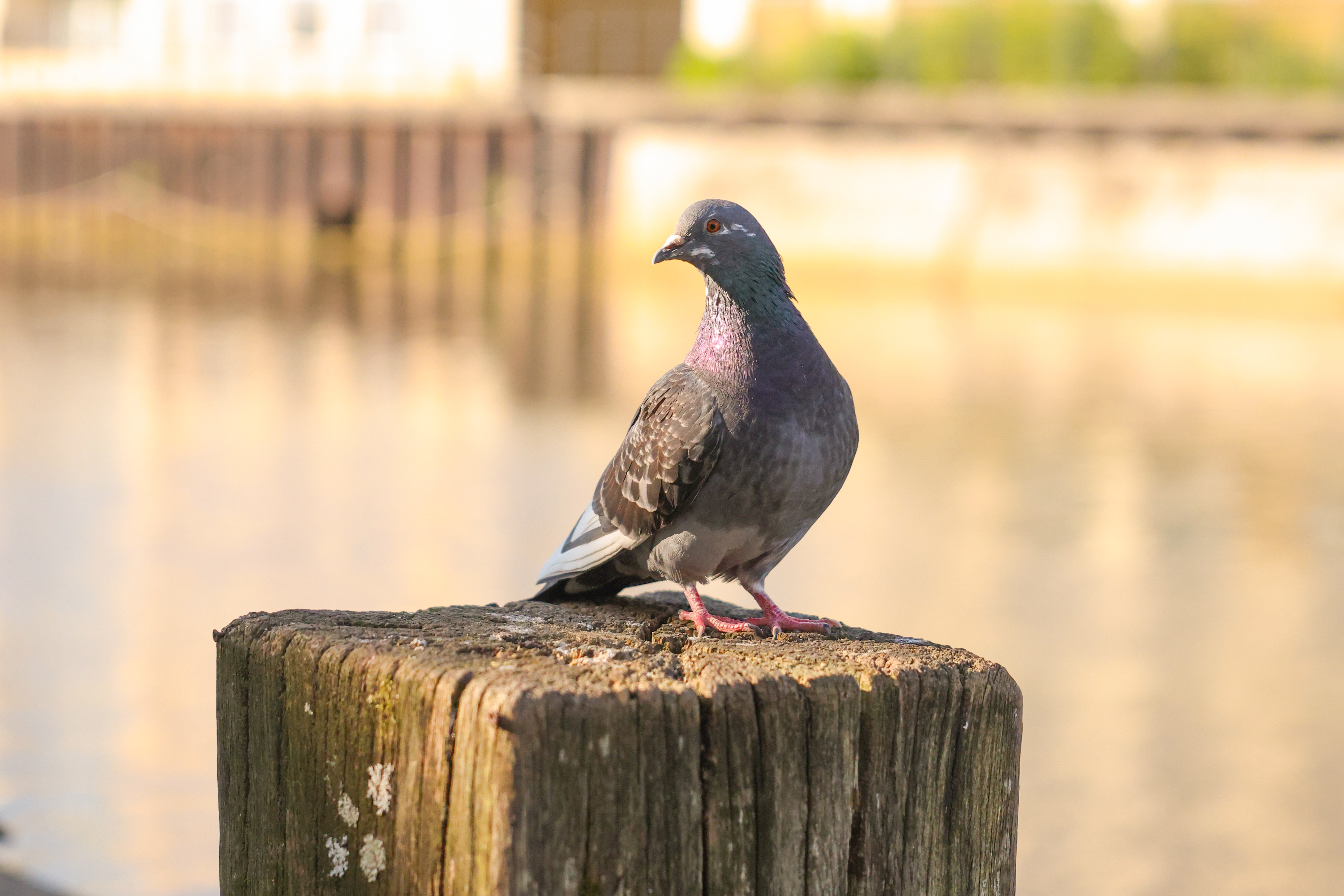
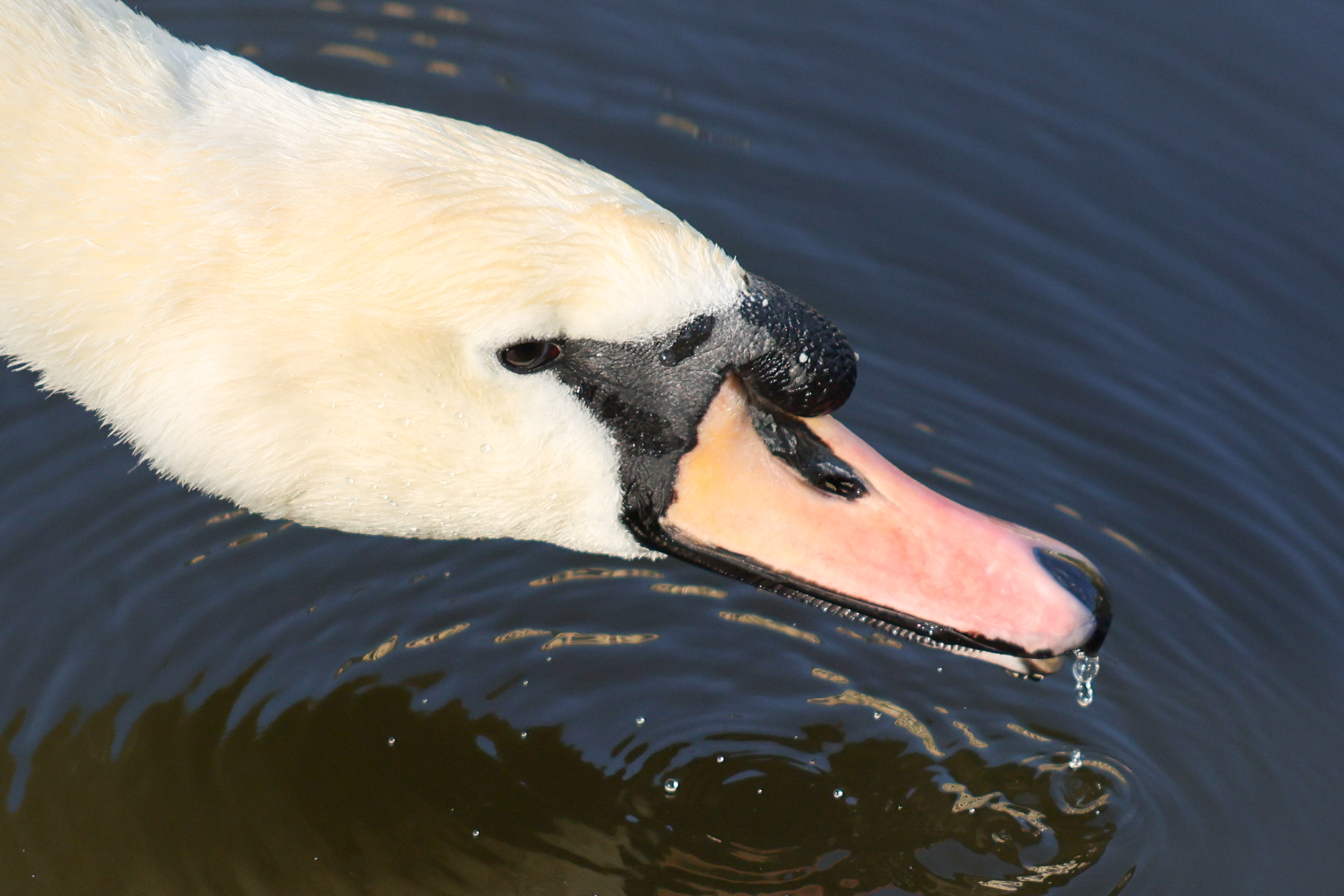
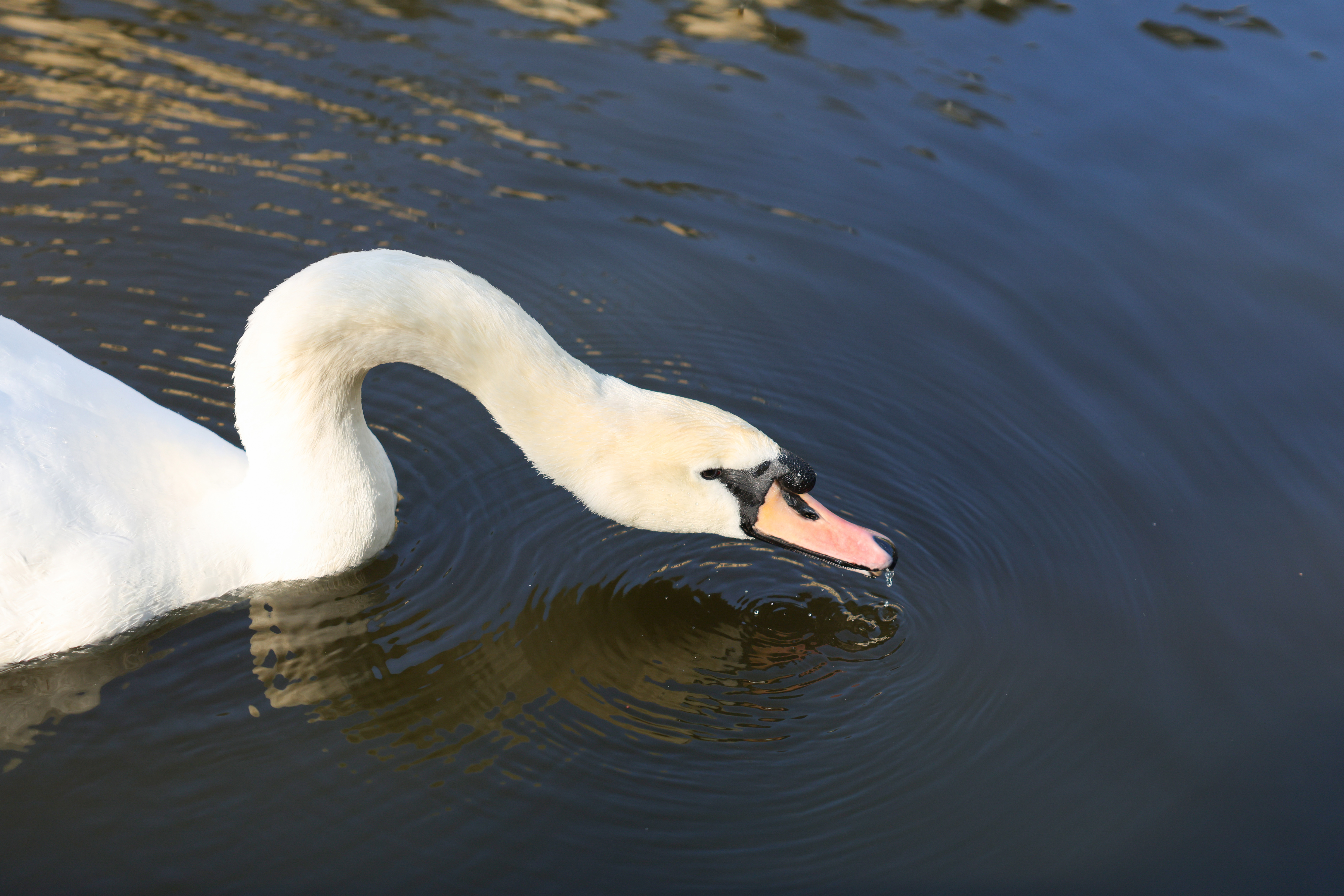
There’s also plenty of resolution for extreme crops and large format printing, and cropping into images reveals the sheer extent of the EOS R5 Mark II’s 45MP Stacked sensor. The first photo above is a crop of the second. The detail is fantastic, and even in the cropped photo, you can see each eyelash and remnants of eye liner on the lower eyelid.
You can see other examples in the gallery too. The third is a crop of the fourth photo while the fifth is a crop of the sixth photo.


The EOS R5 Mark II, similar to Sony and Fujifilm cameras, comes with built-in picture styles/filters. Seven are preset (such as monochrome) while three can be designed and saved by the user. The photos of my colleague were shot under studio lighting at our photo studios and in the monochrome profile. Canon’s black and white profile looks similar to Fujifilm’s Acros, and the photos have come out sharp. Also, the camera quickly locked onto her eyes, even when they were closed.
The EOS R5 Mark II now features in-camera upscaling (powered by AI) for images shot as JPEG/HEIF. It enhances resolution by 4x by extrapolating the image’s EXIF data, creating stills up to 180MP from the original 45MP image. This could be an invaluable feature for all types of photographers. You can also select a range of images and upscale them together, but this will eat into your card’s storage.
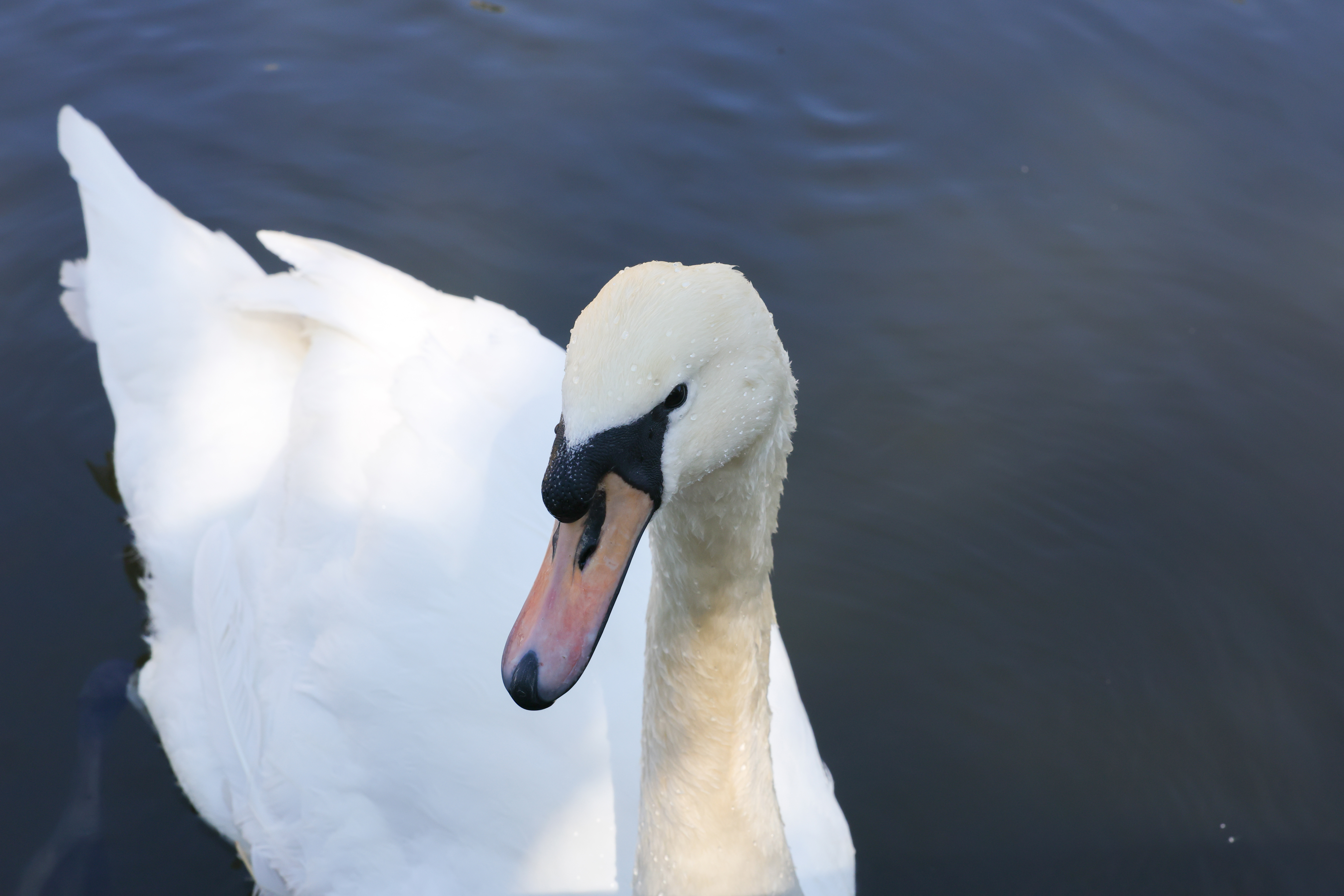
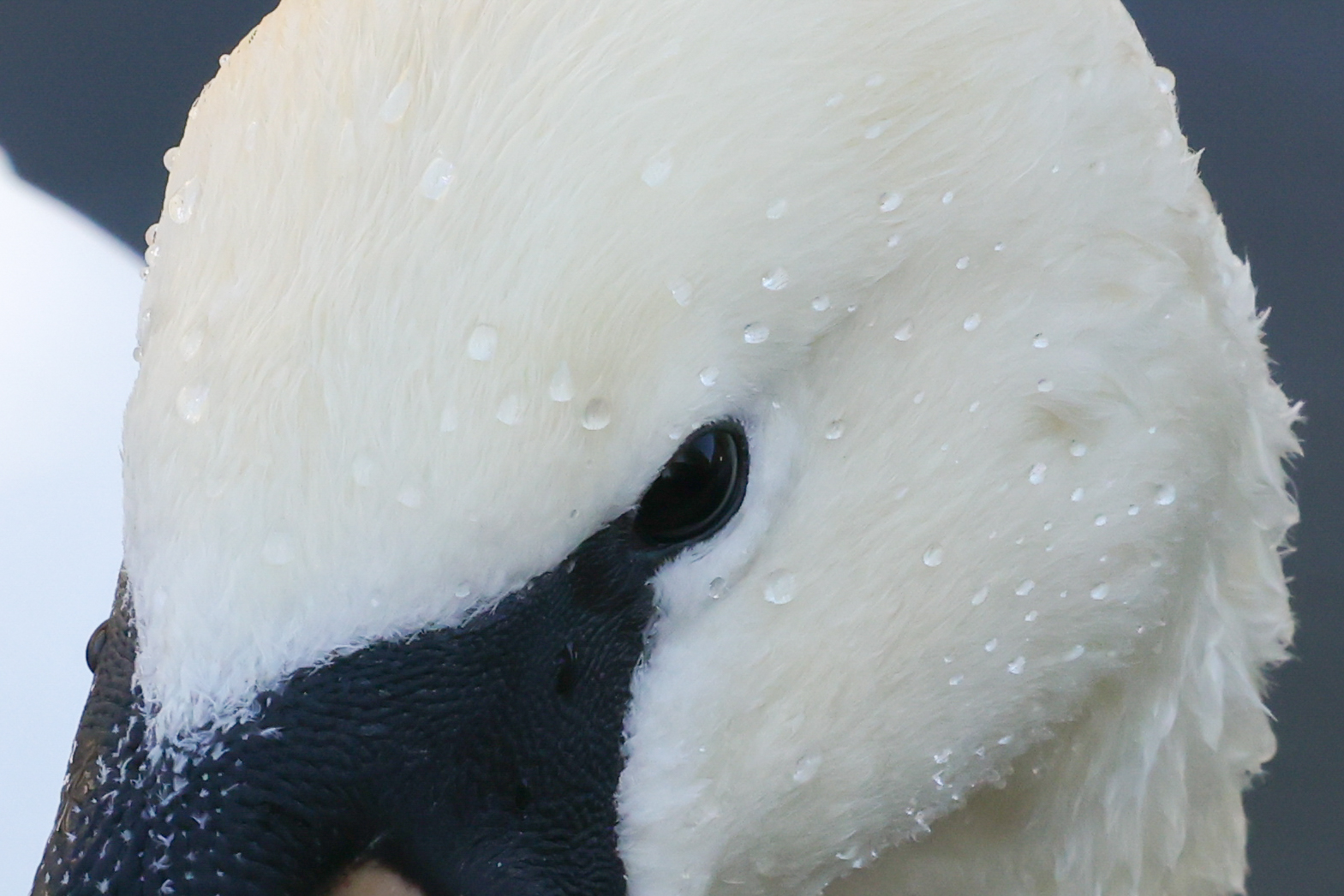
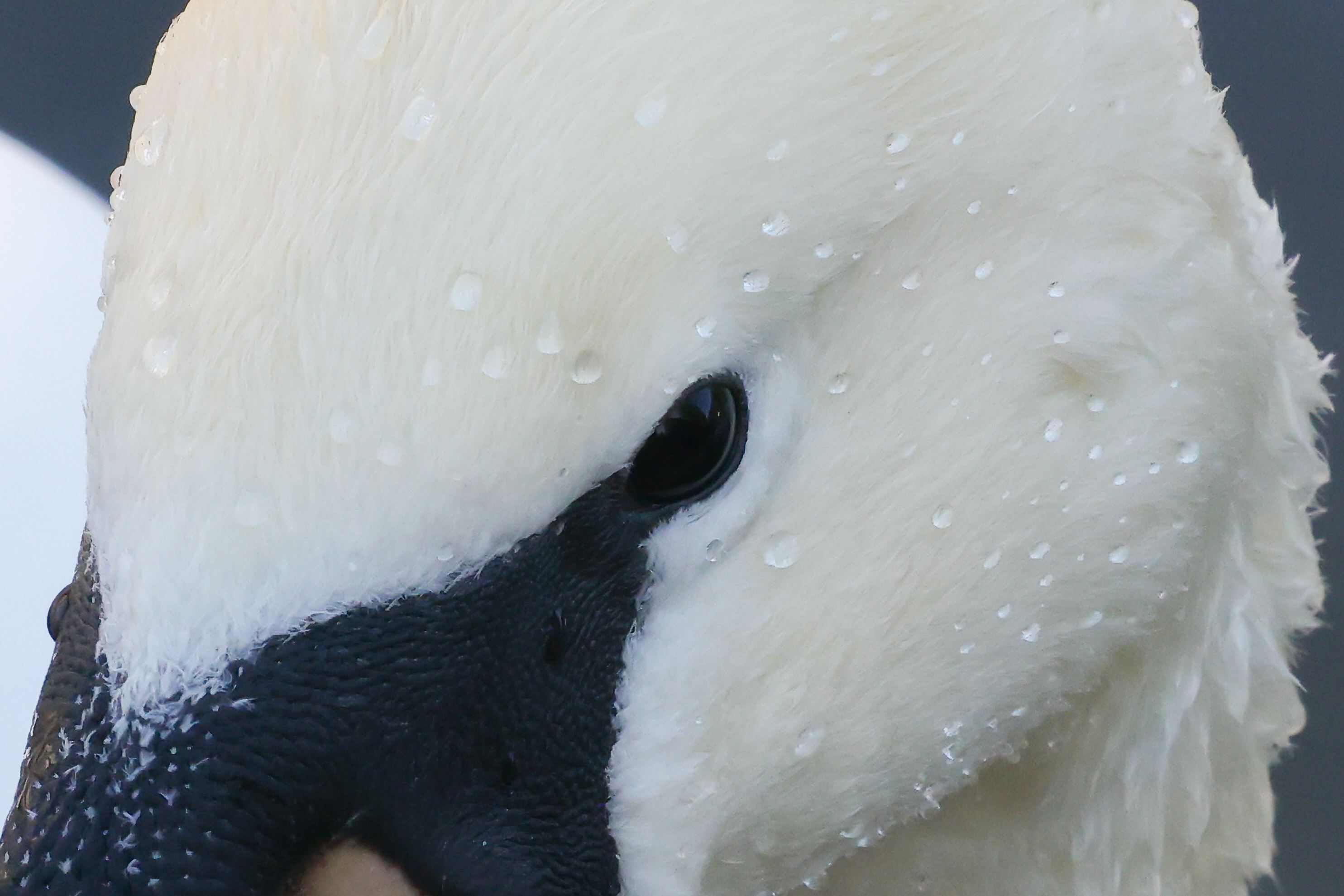
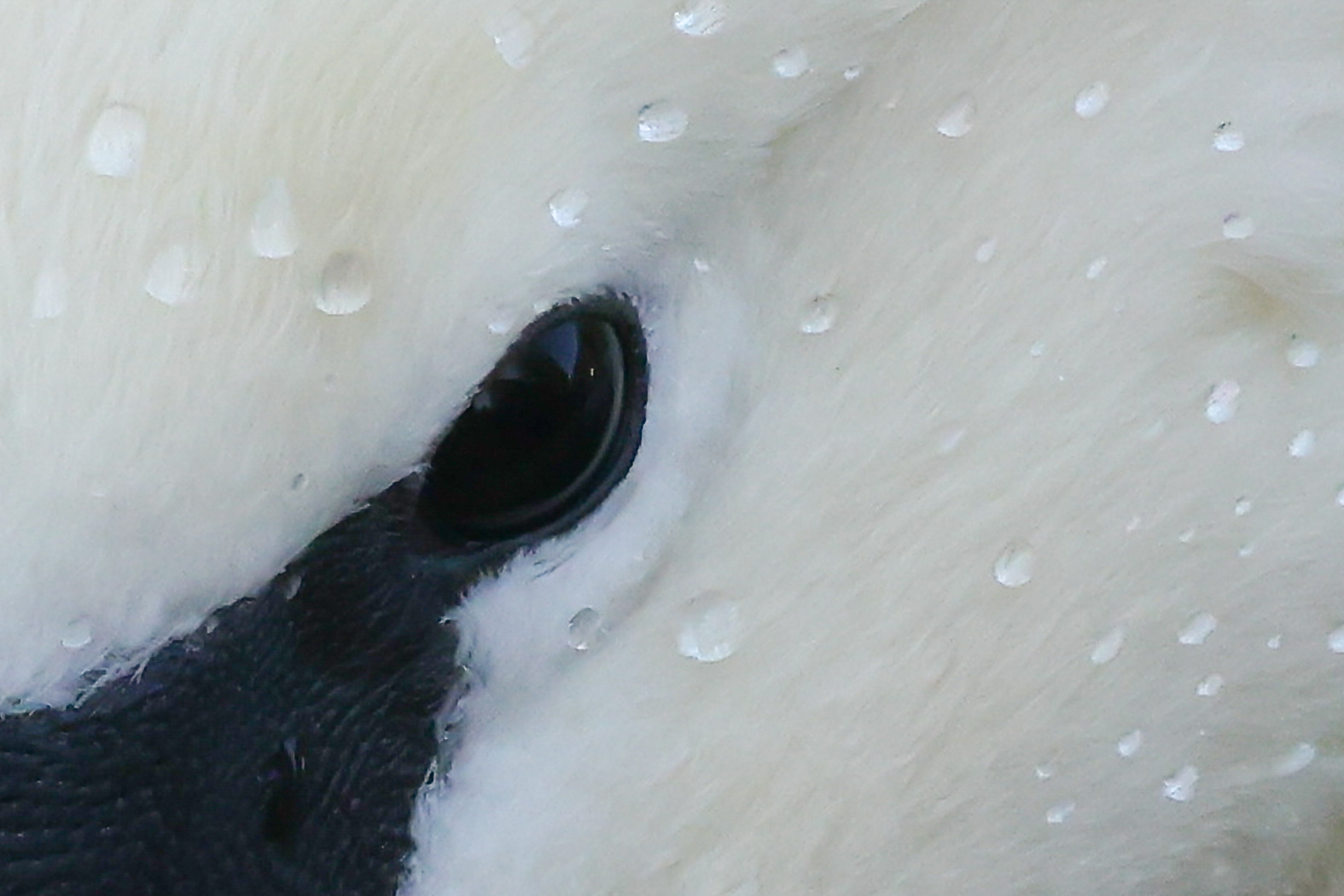
I upscaled a photo of a swan. The first photo is the original 45MP file, the second is a crop of the 45MP file, the third is an upscaled crop, and the fourth is an extreme upscaled crop. While the original files have retained a lot of detail, the upscaled version shows more in the tiny water droplets on the swan’s head.
Burst shooting
The EOS R5 Mark II’s prowess lies in its ability to capture action-packed sports and fast-moving animals. It uses two imaging processors — DIGIC Accelerator and DIGIC X — for 30fps burst shooting (for up to 191 raw images and 15 frames in pre-capture) and shutter speeds of 1/32,000s. This is blisteringly fast. In comparison, the Sony A1 II can capture up to 153 raw images (in 30fps burst). However, smaller-sensored cameras like the 40fps Fujifilm X-H2S ($2,499) have the edge here.
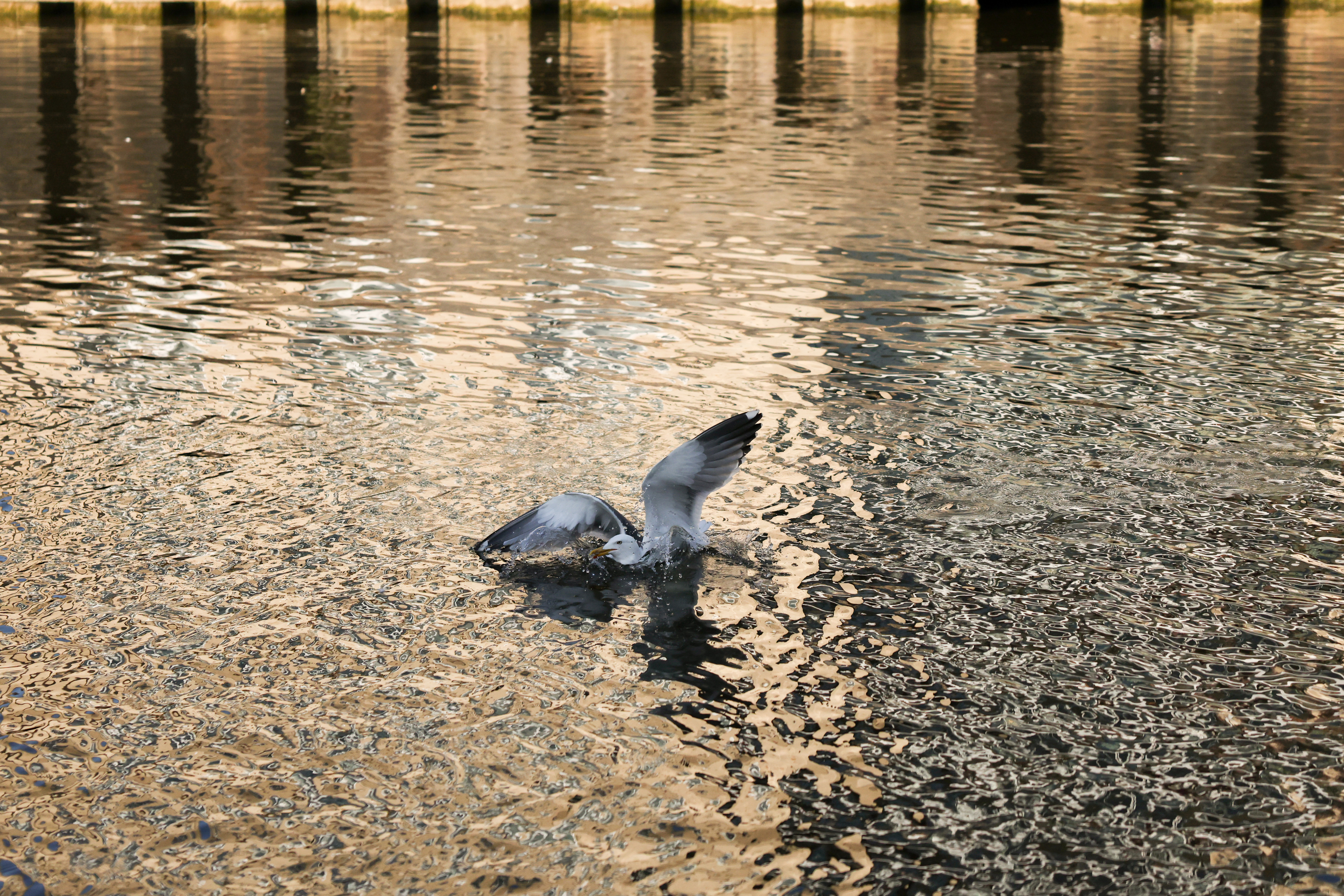
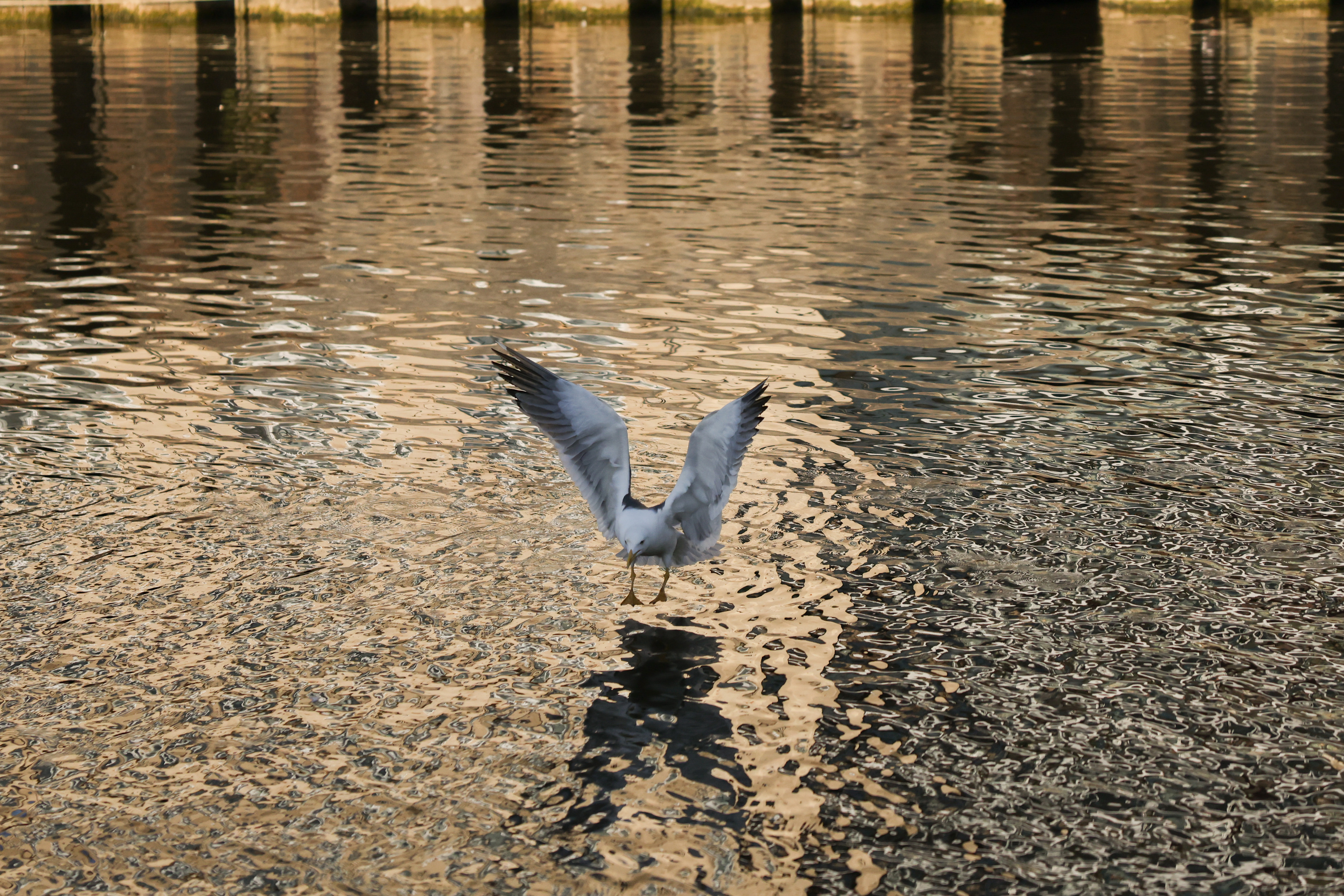
Regardless, most of the photos I took turned out fantastic. The photos above were shot in High-Speed Continuous Shooting+ mode to leverage the 30fps electronic shutter, at 1/21,000s and ISO 1000. I adjusted the shutter speed, ISO and aperture manually with the camera’s Auto subject-detection mode enabled. The camera quickly locked on to the seagull’s eye, and thanks to the rapid AF and burst shooting, I was able to capture the split-second moments when it landed in the water.
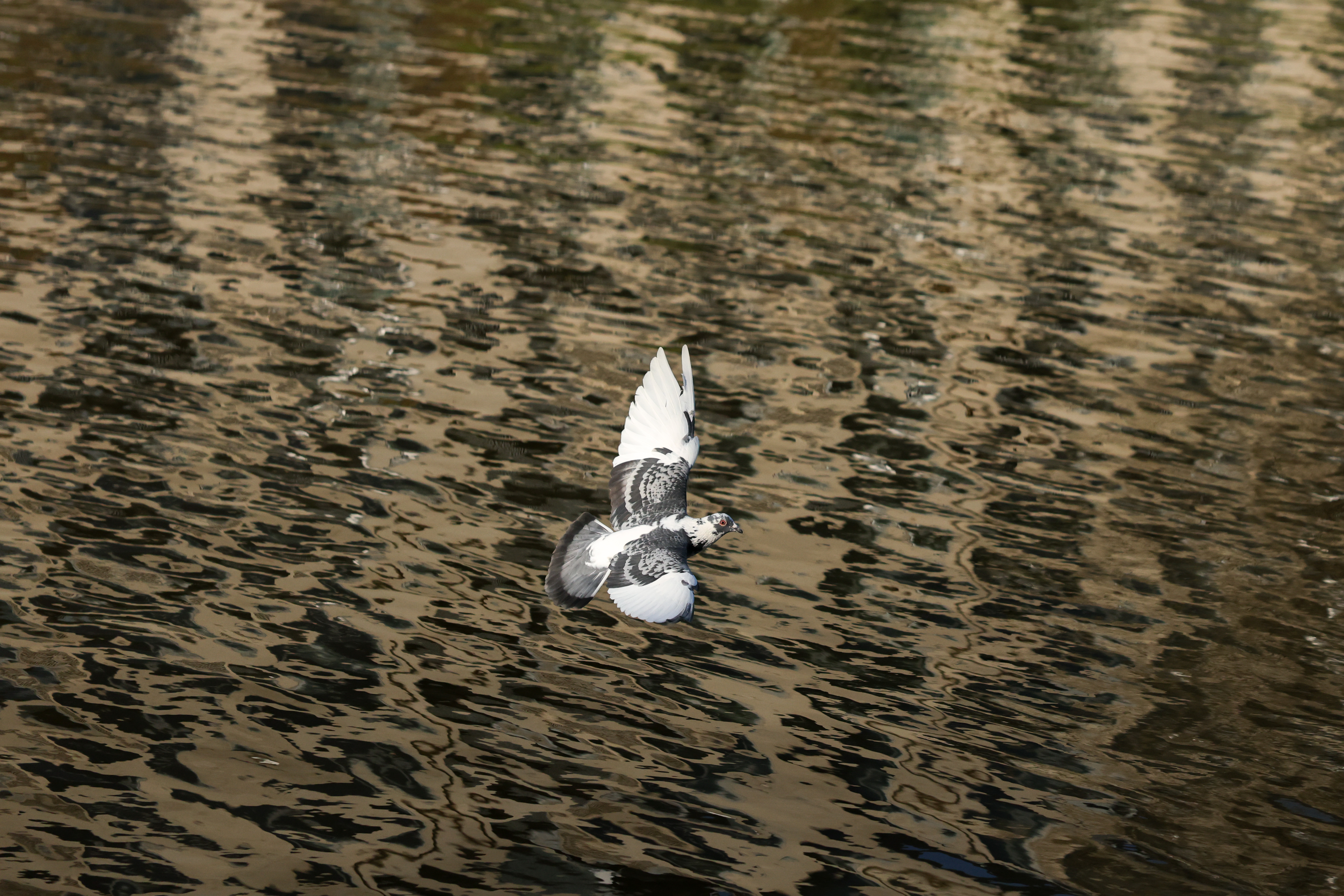
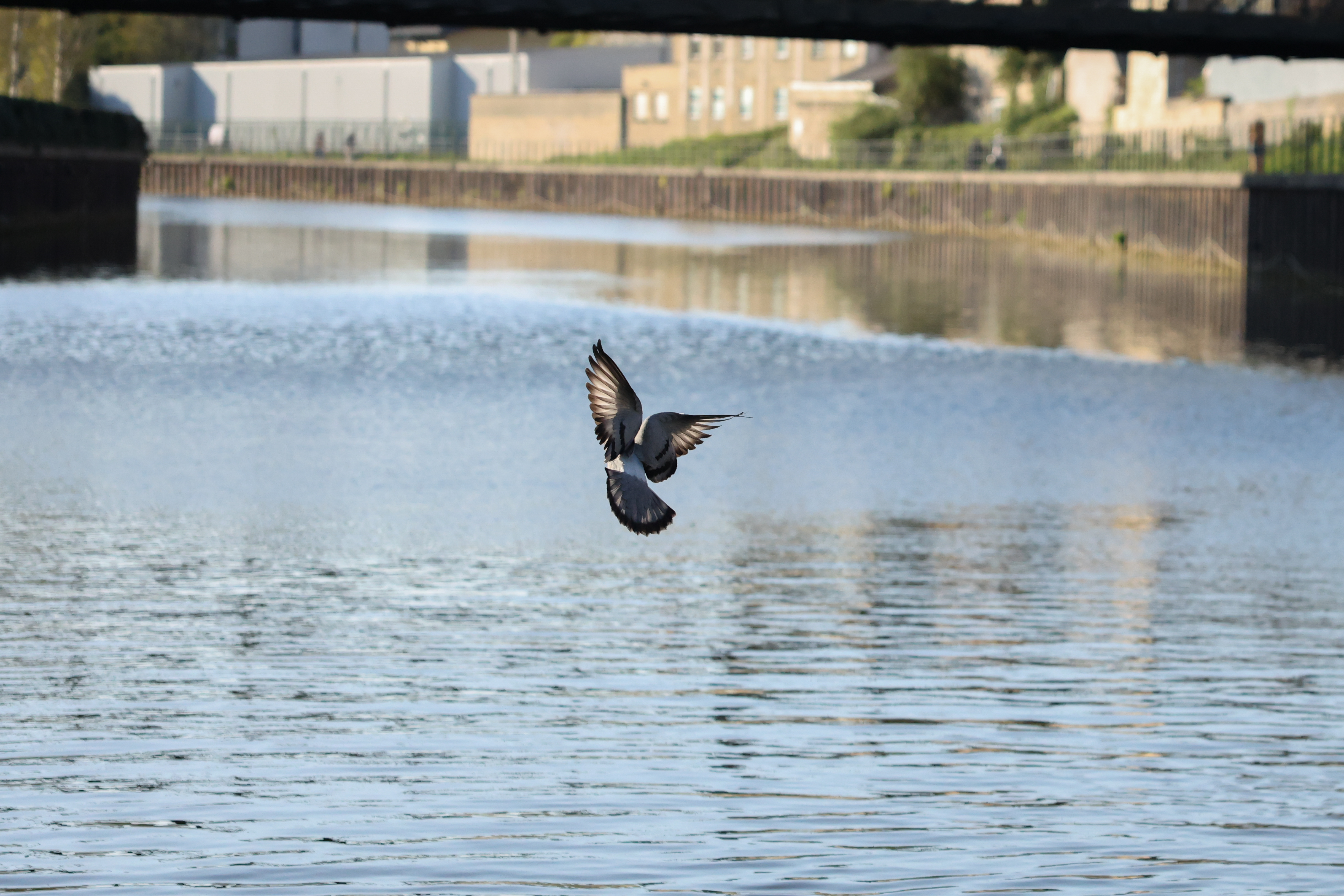
Both photos of the pigeons in flight (above) are extremely sharp too, with each individual feather distinguishable. The camera also ensured there were no blackouts, and the CFExpress Type-B card ensured there was no downtime after bursts as the camera wrote the images to the card.
ISO performance
As with other cameras I test at Tom’s Guide, I put the EOS R5 Mark II through an indoors ISO test. Similar to the Sony A1 II and other cameras of its caliber, the EOS R5 Mark II has an ISO range of 100-51,200 (expandable to 102,400) for stills.


The photos above were shot at ISO 6400 — the first image is a JPEG export of the CR3 RAW file, while the second is the straight-out-of-camera (SOOC) JPEG. Noise starts to creep in but, as you’d expect, thanks to the in-camera neural network noise reduction, it is smoothed out and you don’t notice it in the second image.
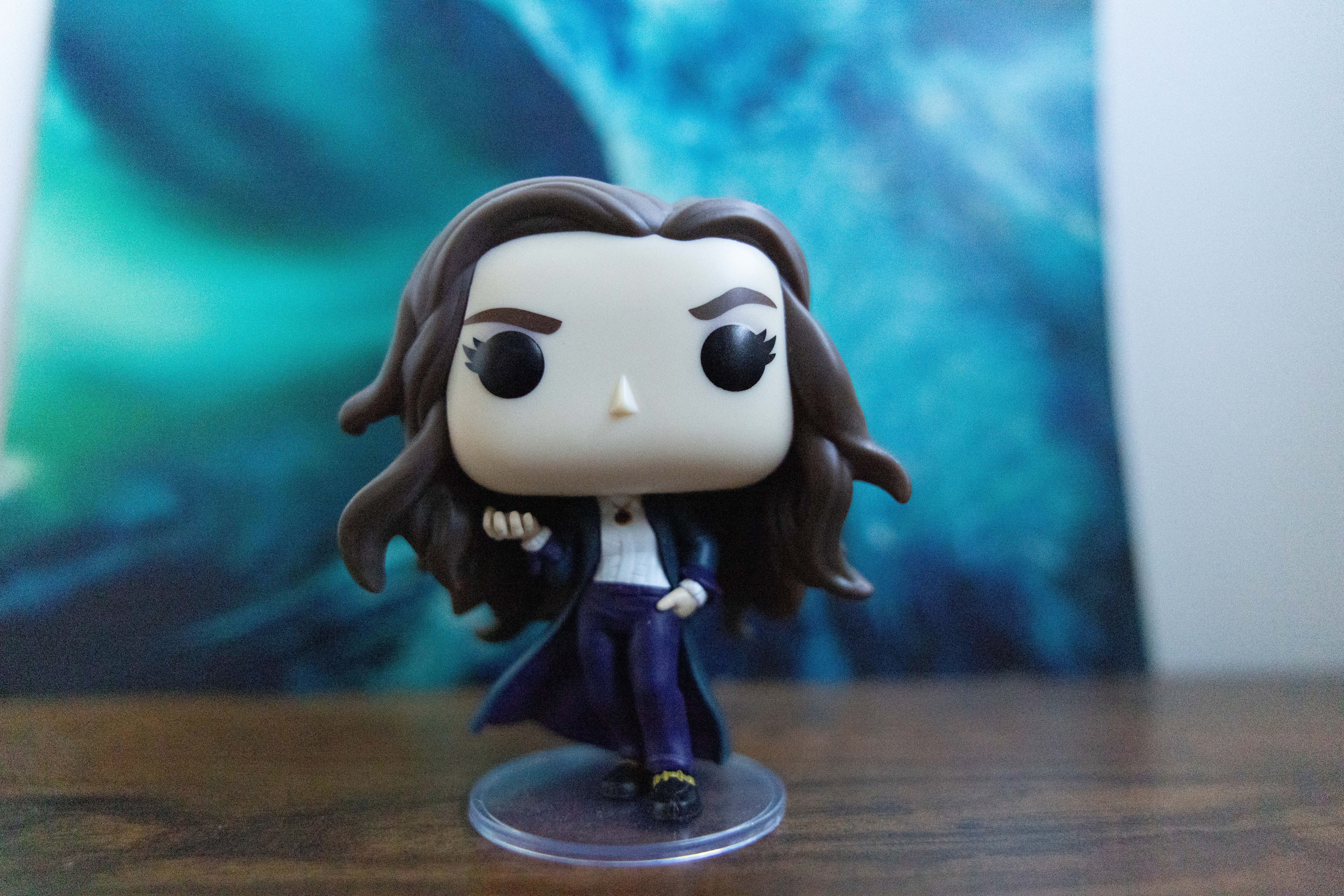
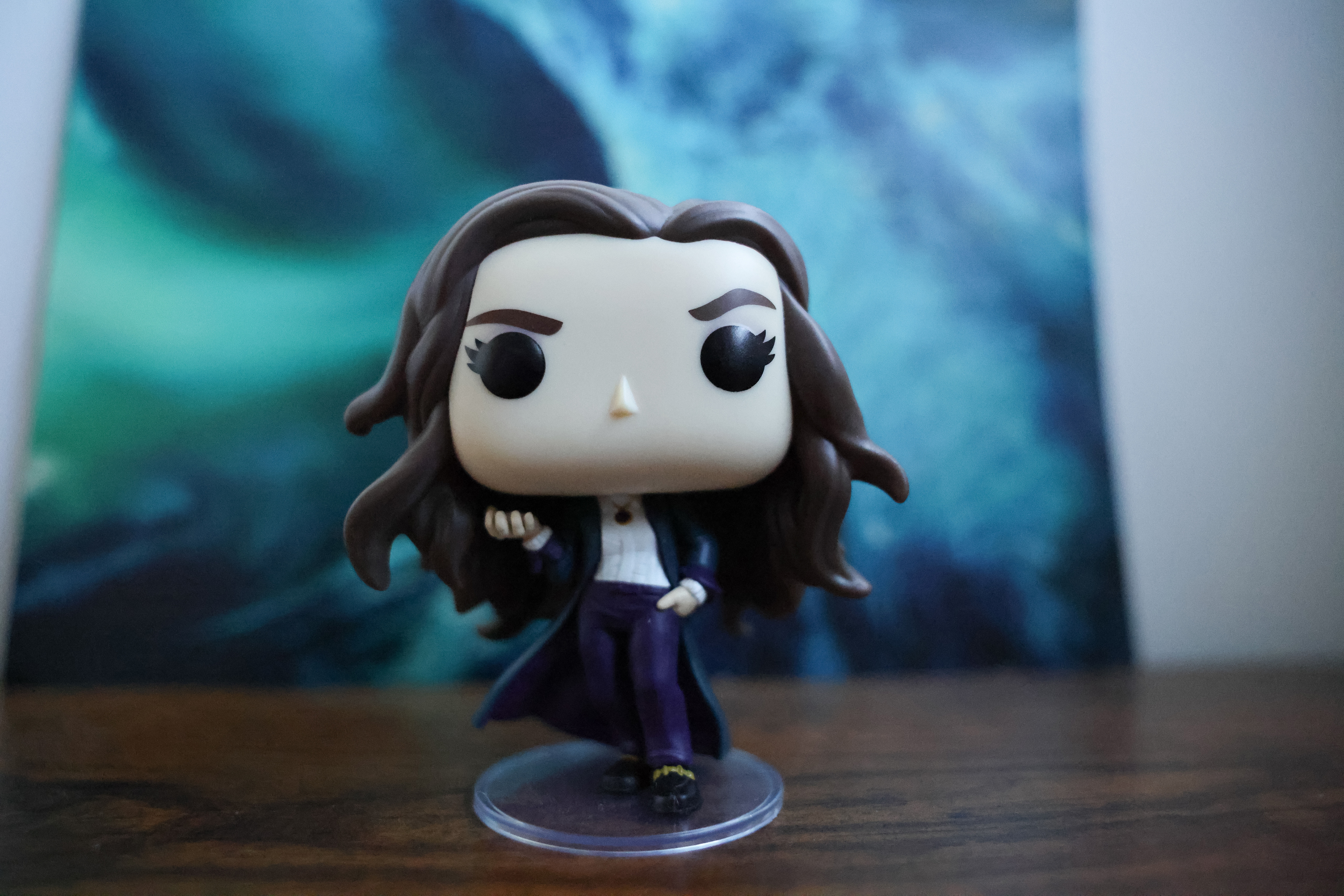
I then cranked the ISO up to 12,800 in the photos above (first is RAW, second is SOOC JPEG), and once again, the EOS R5 Mark II did a fantastic job of reducing the noise, resulting in a usable image.
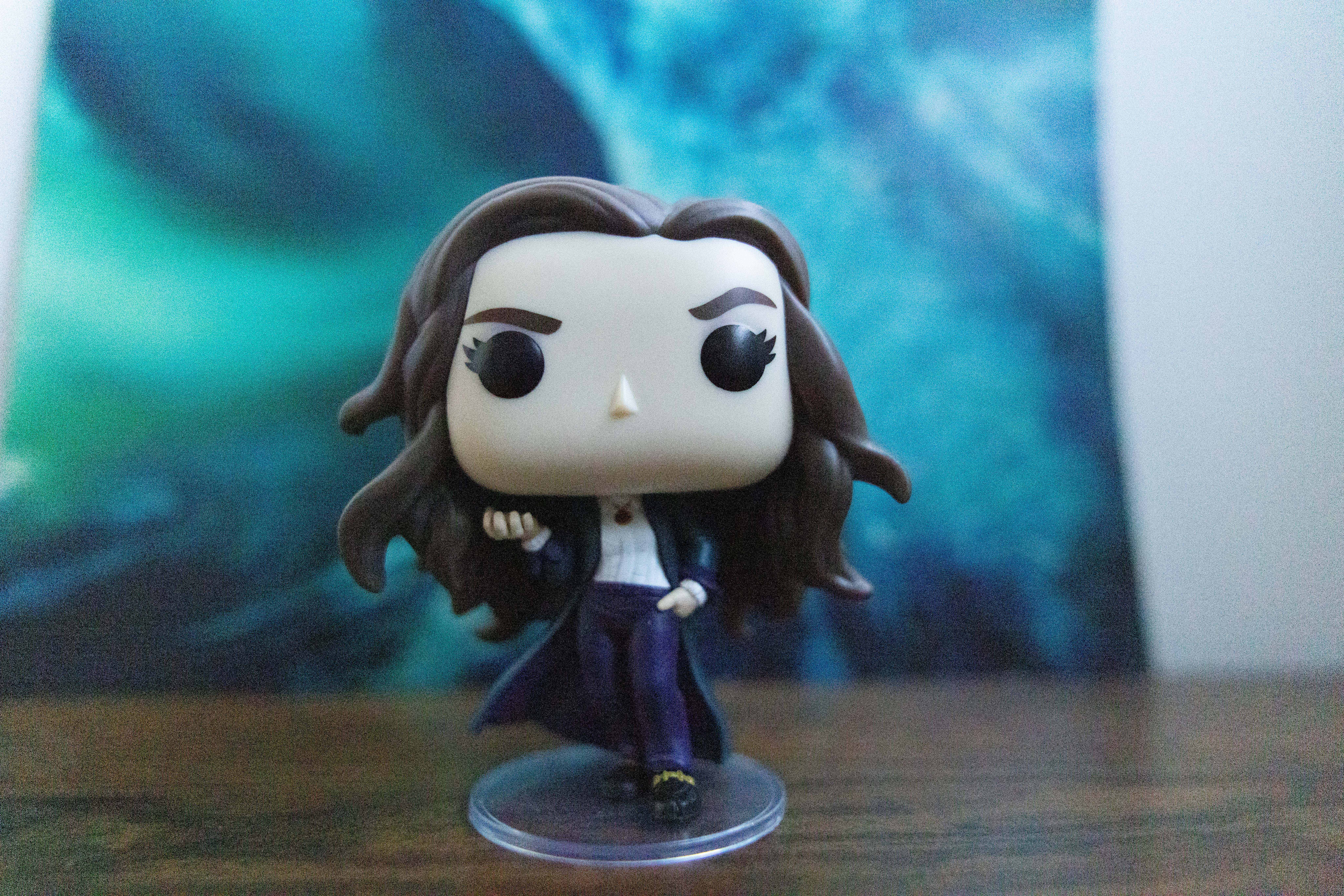
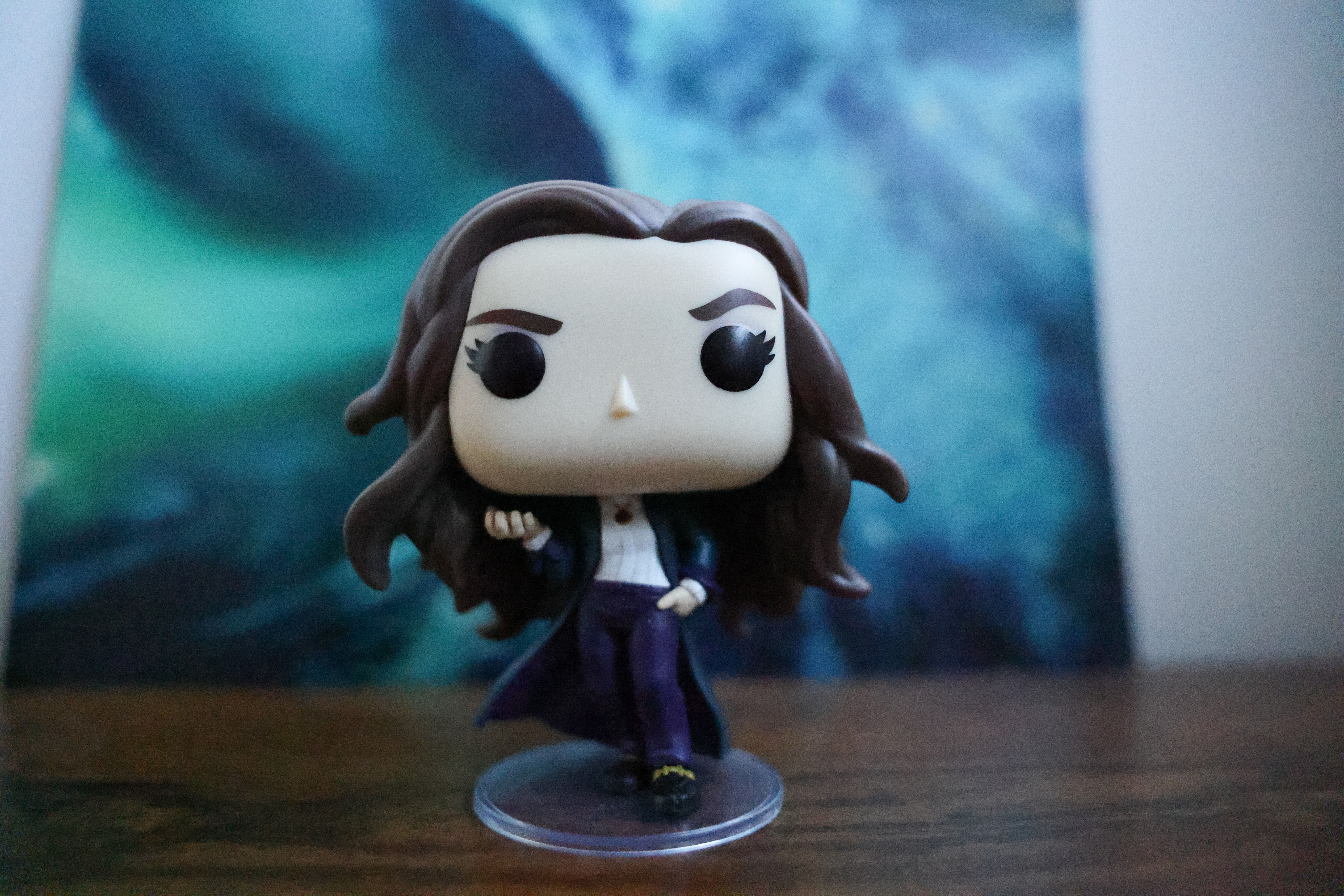
Even at ISO 25,600, the EOS R5 Mark II does a decent job of reducing noise. The photos above demonstrate this. The performance is neither fantastic nor awful, and these images should be used as a last resort only. This was also the case when I tested the Sony A1 II.
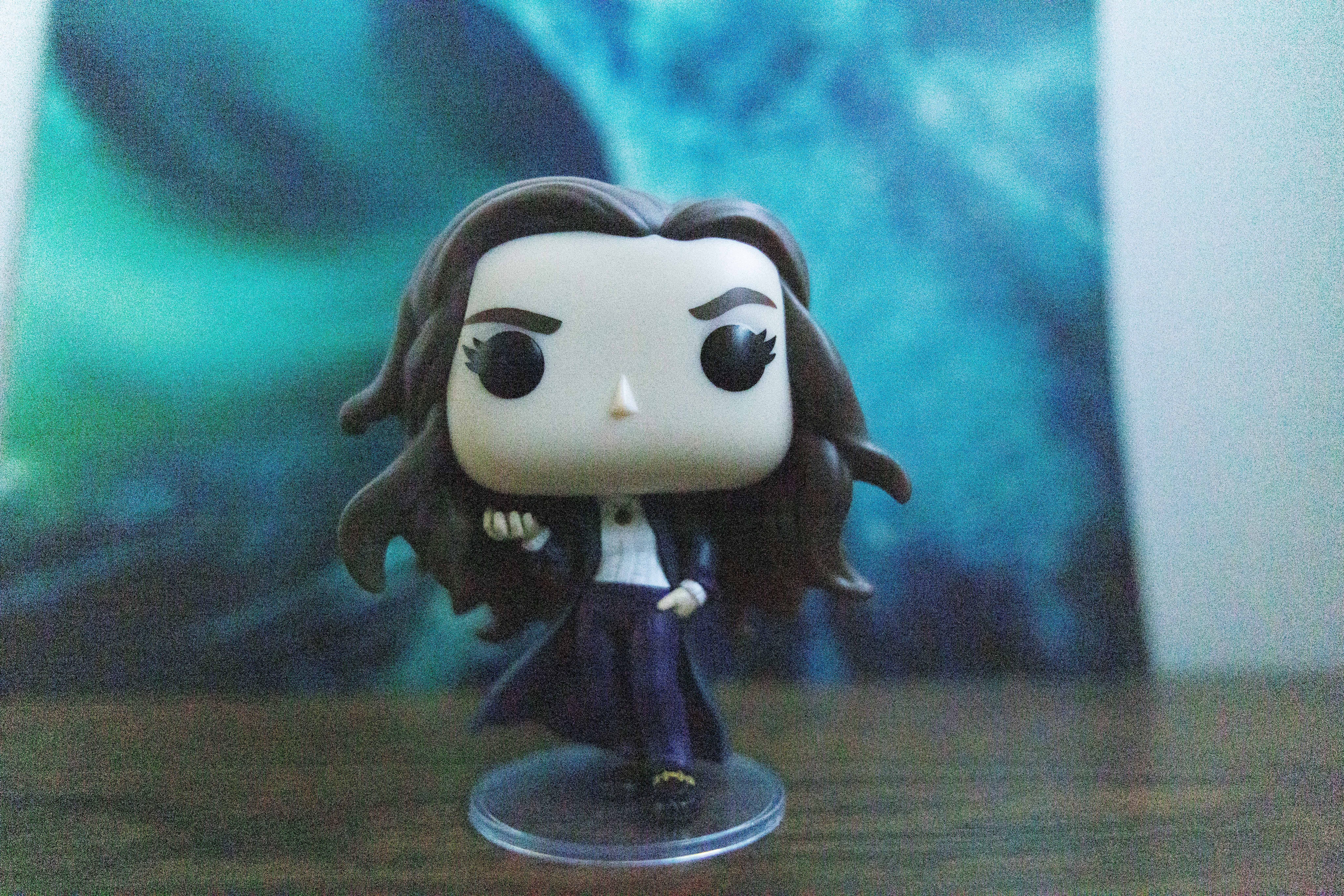
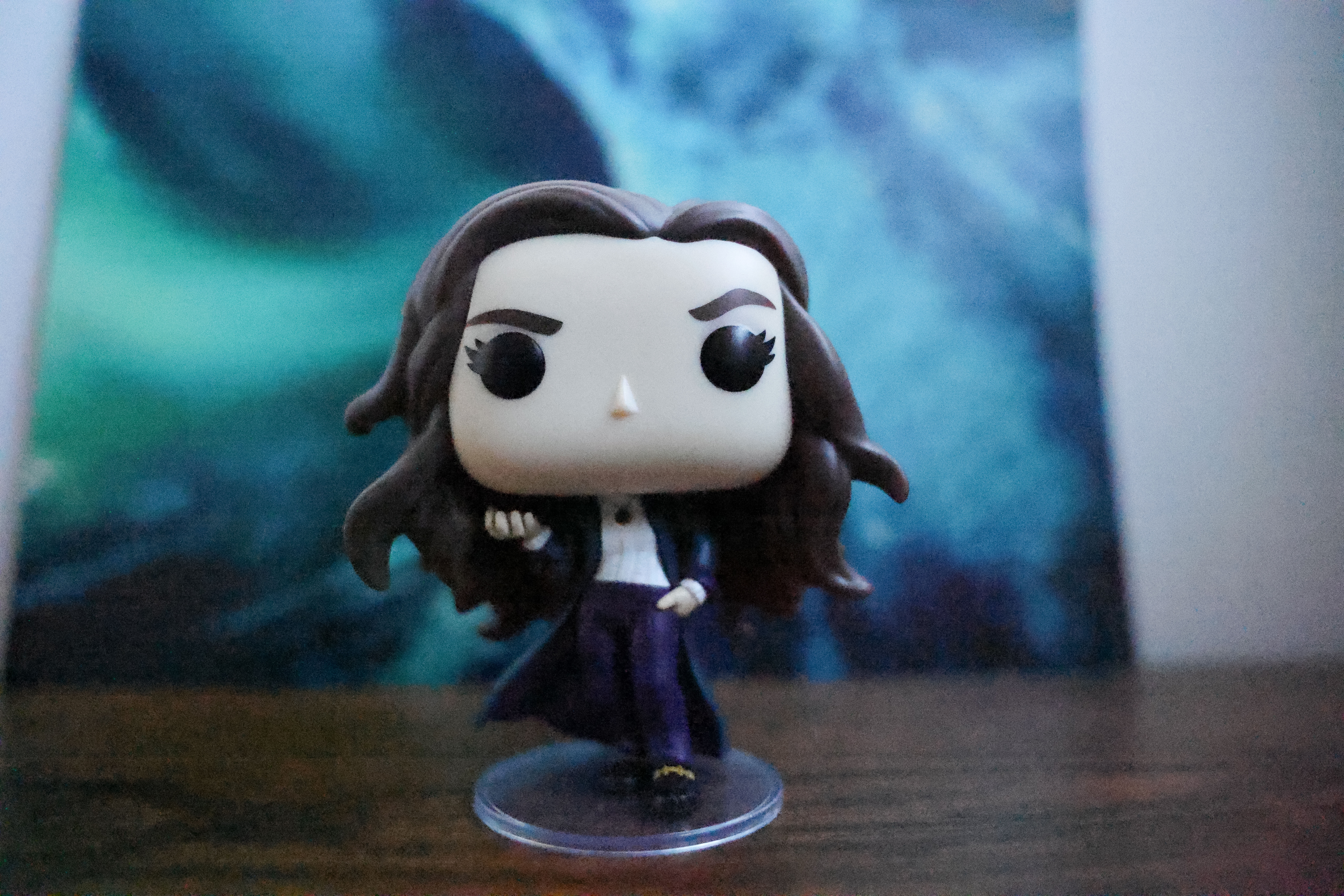
At ISO 51,200, images aren’t usable as noise appears destructive even in the SOOC JPEG (second photo). This is an extreme test, though, and the results may differ in real world scenarios.
Dynamic range
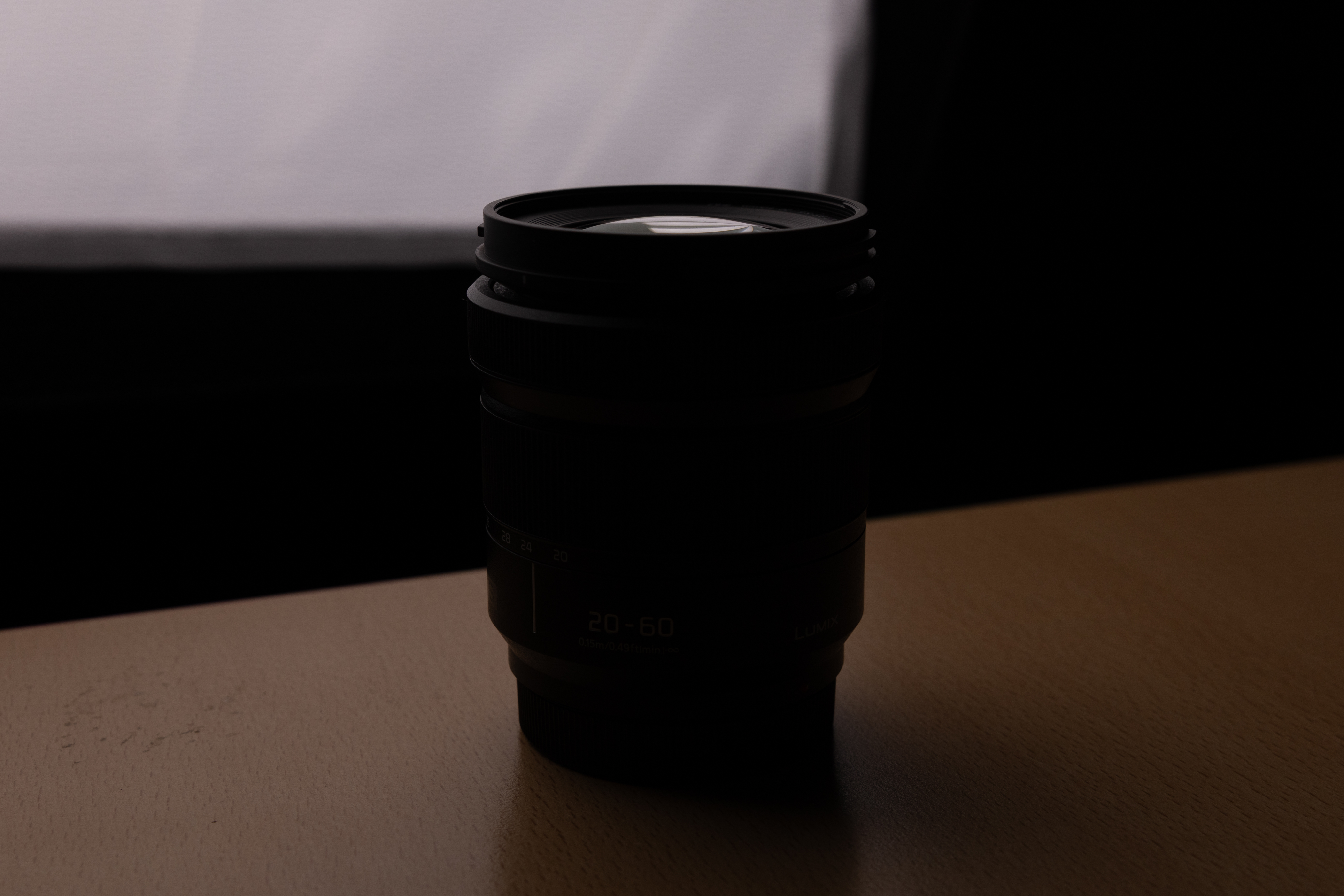
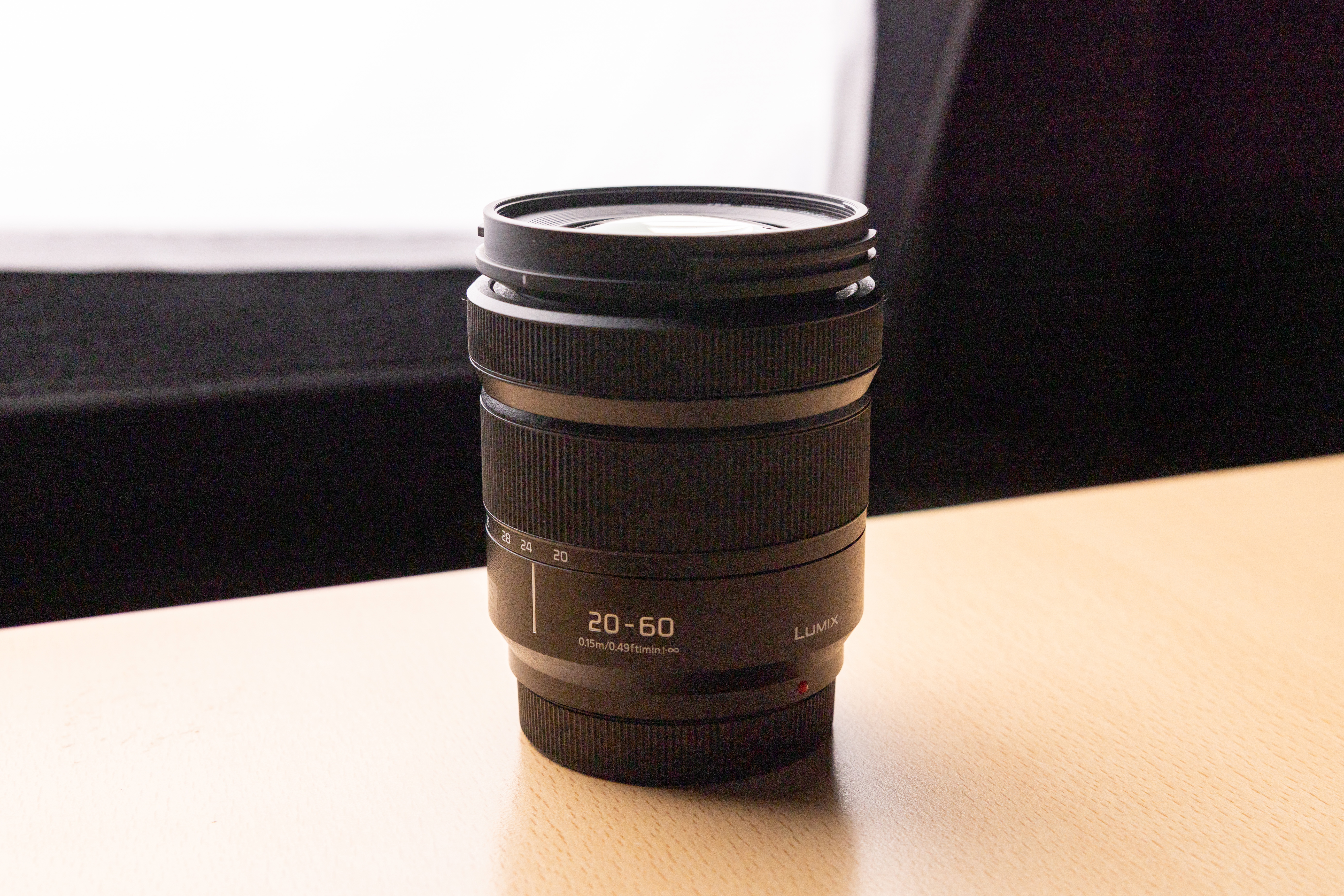
The EOS R5 Mark II’s dynamic range is impressive too, offering up to 16 stops. The two images in the gallery above are the same backlit photo of a lens, taken for an extreme dynamic range test, shot at ISO 100.
The second image is the same photo with the exposure and shadows boosted, and highlights reduced in Adobe Photoshop Lightroom. A lot of detail has been retained in the shadows and the highlights aren’t blown out either. This performance is similar to that of the Sony A1 II.
Canon EOS R5 Mark II review: Video performance
Not only is the Canon EOS R5 Mark II fantastic for photography but it boasts great video specs too, making it a great hybrid camera for pros. You can shoot in 4K/120fps, and 8K/60fps (versus 30fps on the EOS R5) with 10-bit 4:2:2 color depth, which means it’s capable of capturing a wide color gamut with a total of 1.07 billion individual hues.
You can also shoot in Canon Log 2 and Canon Log 3, where the latter captures a wide dynamic range of up to 13.3+ stops. C-Log is usually reserved for Canon’s cinema line-up so it’s good to see that a mirrorless camera has gained it too. There’s also no 4GB file size limit for video recording when using CFexpress or SDXC cards — an improvement over the EOS R5 — but the camera does have a maximum recording time of six hours, depending on the format used.
The EOS R5 Mark II offers a lot of flexibility with compression types and recording formats, including internal RAW recording, therefore gaining an edge over cameras like the Sony A1 II. It has also gained features like waveforms, a false color display and zebras, therefore becoming the first EOS R System camera to do so.
If you want a camera purely for professional video, the Panasonic LUMIX S5IIX ($2,199) is a good choice as it offers a plethora of recording features, data capture rates and compression types, 6K/30p, plus unlimited 4K capture — but you’d be sacrificing 8K/60fps video.
Canon EOS R5 Mark II review: Battery life
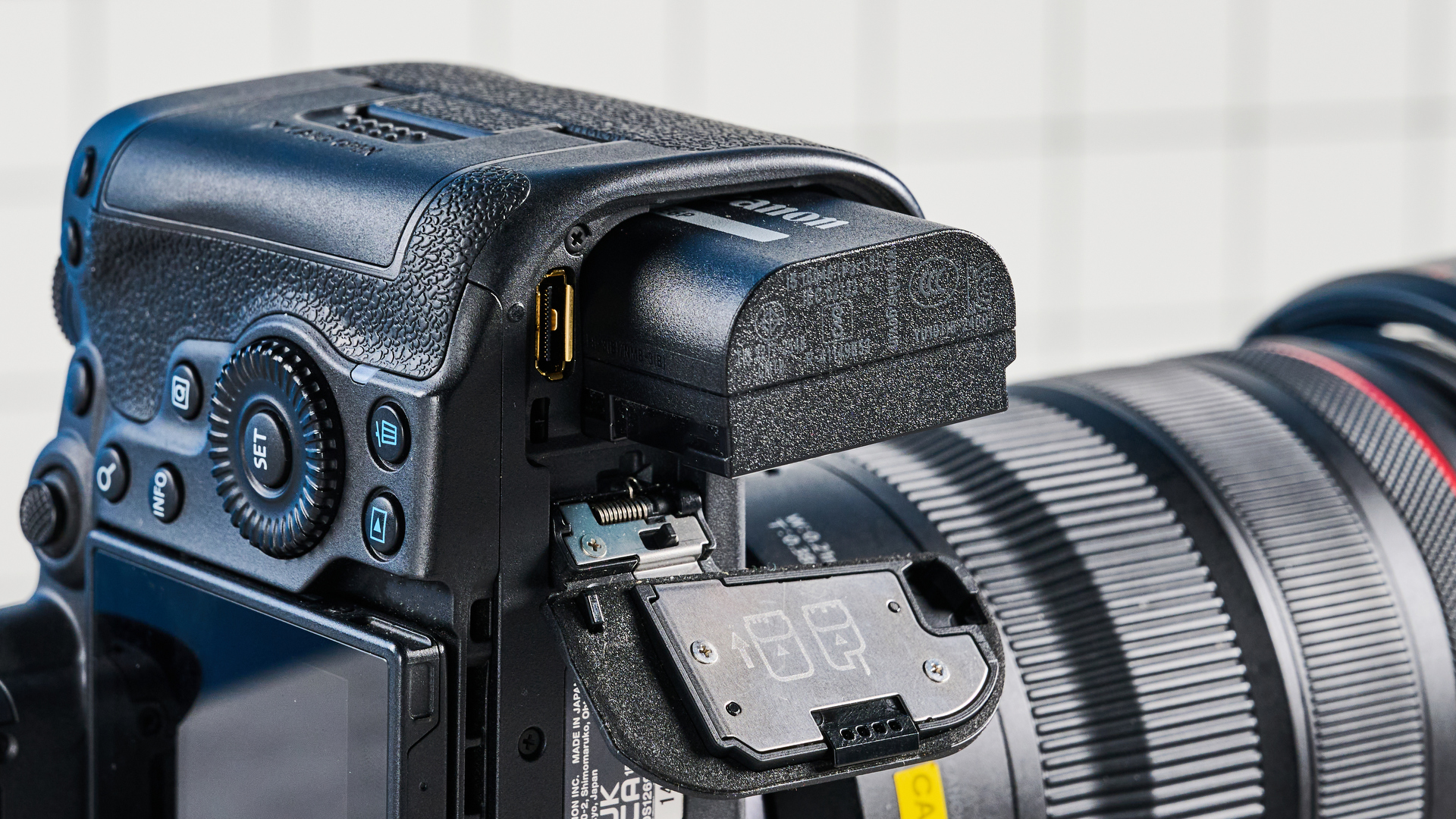
Unlike the first-gen Canon EOS R5 which uses the LP-E6NH battery pack, the EOS R5 Mark II is powered by the new LP-E6P pack. This battery pack doesn’t last nearly as long as the EOS R5’s, as it’s CIPA-rated for just 340 shots (viewfinder) or 630 shots (LCD monitor). In comparison, the EOS R5 is rated for 950 shots.
It’s CIPA-rated for just 340 shots (viewfinder) or 630 shots (LCD monitor). In comparison, the EOS R5 is rated for 950 shots.
Now, this could be because the battery is fueling power-hungry features, such as the higher res EVF, image upscaling and AI noise reduction, but it’s still underwhelming. The EOS R5 Mark II is outshined by its competitors, when using the LCD monitor: Nikon Z9 (740 shots), Canon EOS R3 (860 shots), Canon EOS R1 (1330 shots). It is better than the Sony A1 II (520 shots) and the Sony A7R V (530 shots), though.
Real life battery tests will differ from those conducted under CIPA guidelines. I managed to get nearly 900 photos while shooting a mixture of bursts and single shots outdoors and regularly checking the monitor between shots. Burst shooting prolongs battery life, so it’s best to take the CIPA rating as reference.
Canon EOS R5 Mark II review: Verdict
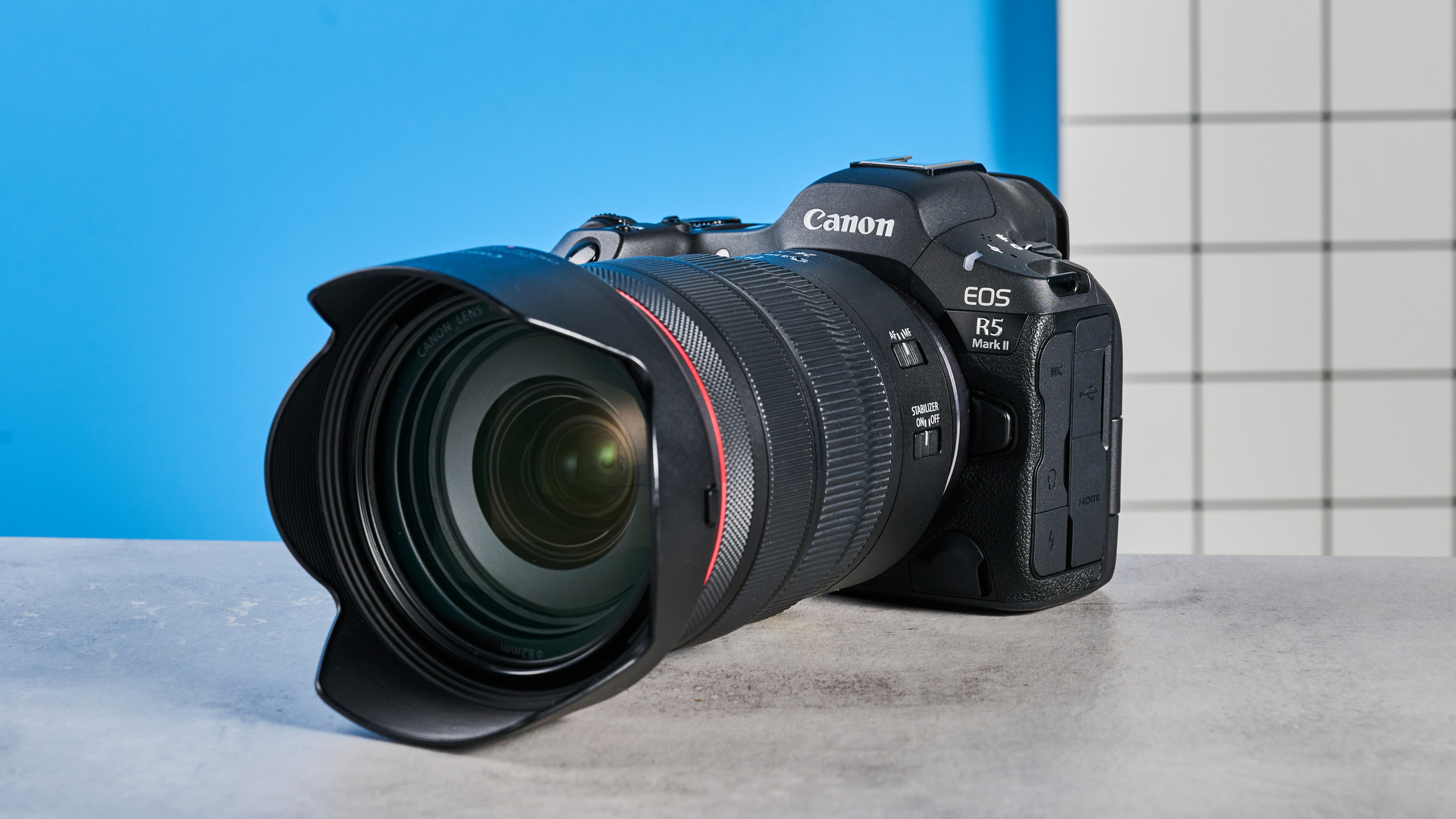
The Canon EOS R5 Mark II is an astonishing mirrorless camera that copes with anything you throw its way. I’ve thoroughly enjoyed using it, and for professional wildlife, sports and studio photographers, I believe it’s worth the premium. I was able to capture extremely sharp images with plenty of detail for extreme crops, thanks to the 45MP Stacked CMOS sensor.
Its rapid autofocus system quickly detects animals’ and humans’ eyes and faces, and it can track vehicles too. When I wanted to shoot fast-paced action, the 30fps burst shooting came in clutch. I also found the camera comfortable to handle for extended periods of time. It proves its worth in video work as well, enabling you to record 8K/60fps footage.
While its battery life is underwhelming and Eye Control AF doesn’t always work — as it didn’t for me — I can’t help but recommend the EOS R5 Mark II. If it’s speed, clarity and detail professionals need, the EOS R5 Mark II delivers.

Nikita is a Staff Writer on the Reviews team at Tom's Guide. She's a lifelong gaming and photography enthusiast, always on the lookout for the latest tech. Having worked as a Sub Editor and Writer for Canon EMEA, she has interviewed photographers from all over the world and working in different genres. When she’s not working, Nikita can usually be found sinking hours into RPGs on her PS5, flying a drone (she's a licensed drone pilot), at a concert, or watching F1. Her work has appeared in several publications including Motor Sport Magazine, NME, Marriott Bonvoy, The Independent, and Metro.
You must confirm your public display name before commenting
Please logout and then login again, you will then be prompted to enter your display name.
